For Walt Grace Vintage’s founder Bill Goldstein, it became a way of life – a calling that led to the construction of a unique slice of paradise in the Wynwood Arts District of Miami that combines his lifelong passions for vintage exotic cars and killer guitars, and serves a stellar cup of coffee to boot!
The first half of Goldstein’s story is a parable about a man that worked hard, found tremendous success, but eventually got caught in the wheels of the very machine he built. Goldstein actually got his first taste of business success as a teenager selling and trading collectible Swatch watches. However, his major successes came as an early innovator in the interactive advertising world. Goldstein’s first advertising venture, RAW Interactive, was founded in 1991 and was one of the first of its kind to focus on interactive, multimedia advertising exclusively. While that might not seem like such a big deal in 2022 – when seemingly everything we engage with has a touchscreen that’s inevitably harnessed for advertising – it was on the absolute bleeding edge in 1991. Eventually, Goldstein sold RAW Interactive, retired briefly, but ended up back in the mix as a Managing Director for another major agency. Ever the archetypical restless creative, Goldstein never set out to be a businessman and found the higher up the ladder he climbed in the advertising world, the further it took him from the actual act of creating. Eventually, he found himself worn out by the mundanity of upper management, uninspired, and miserable. A drastic change was needed, but we’ll let Bill tell you the rest of that story himself – it’s as inspiring as it is unexpected!
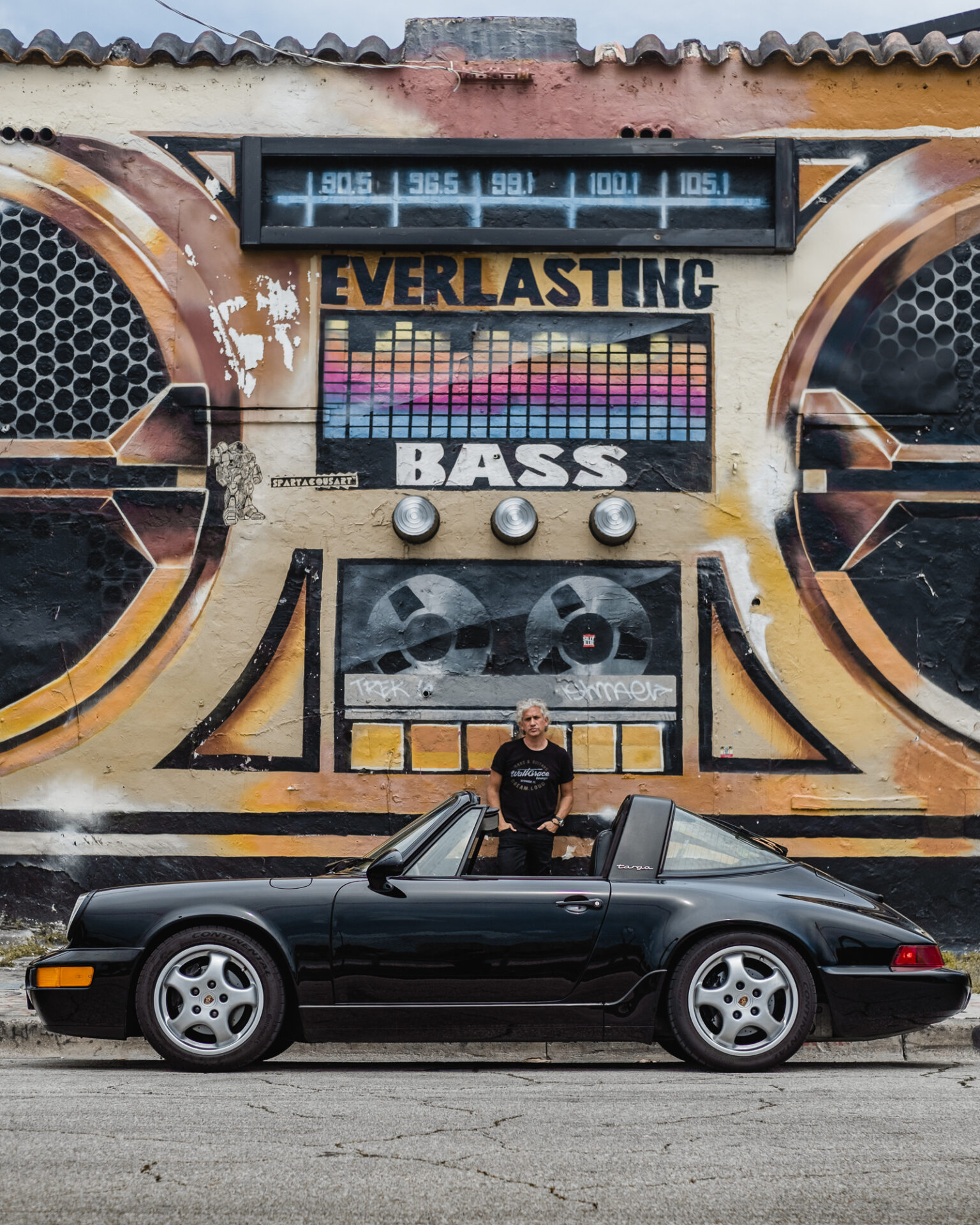

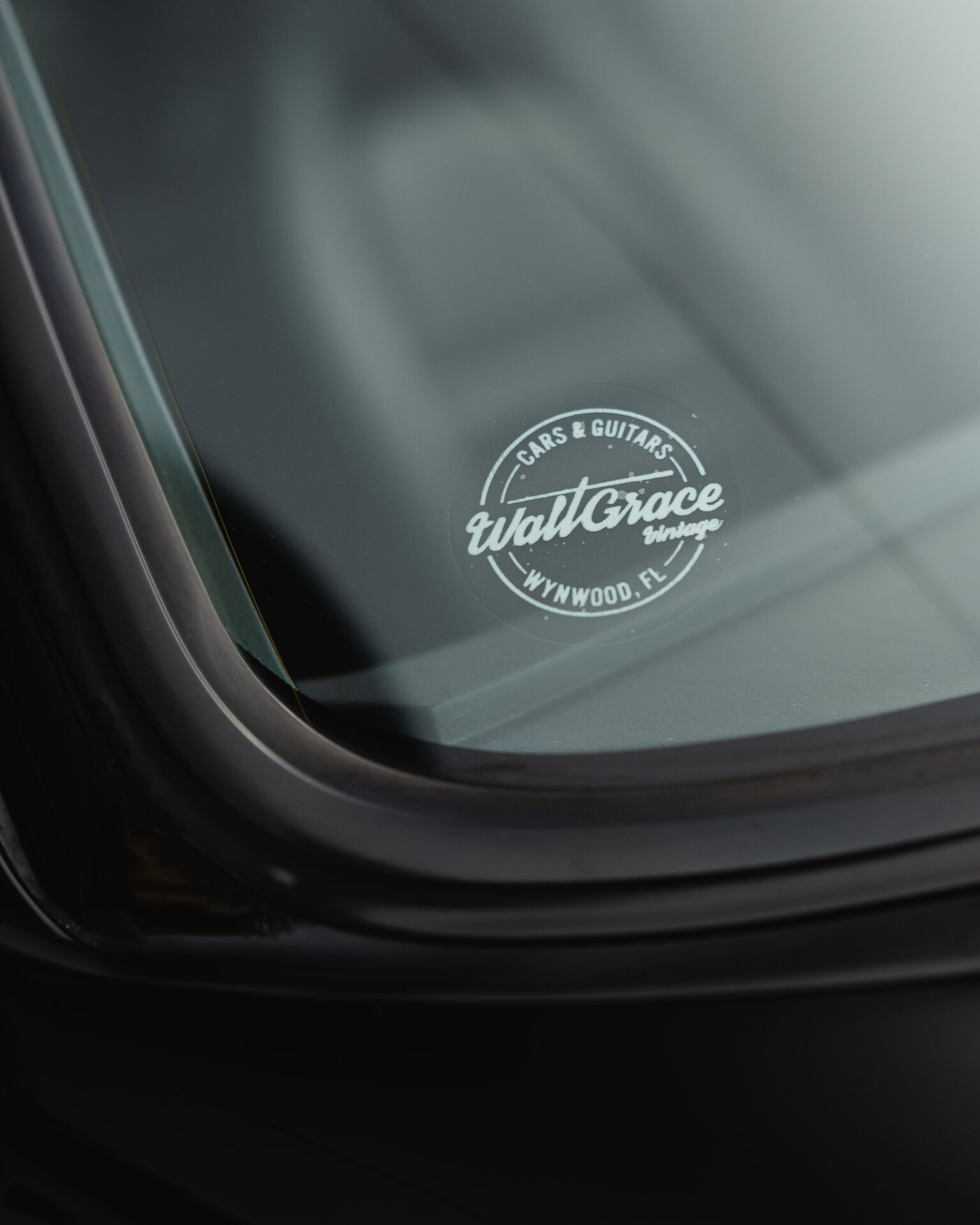
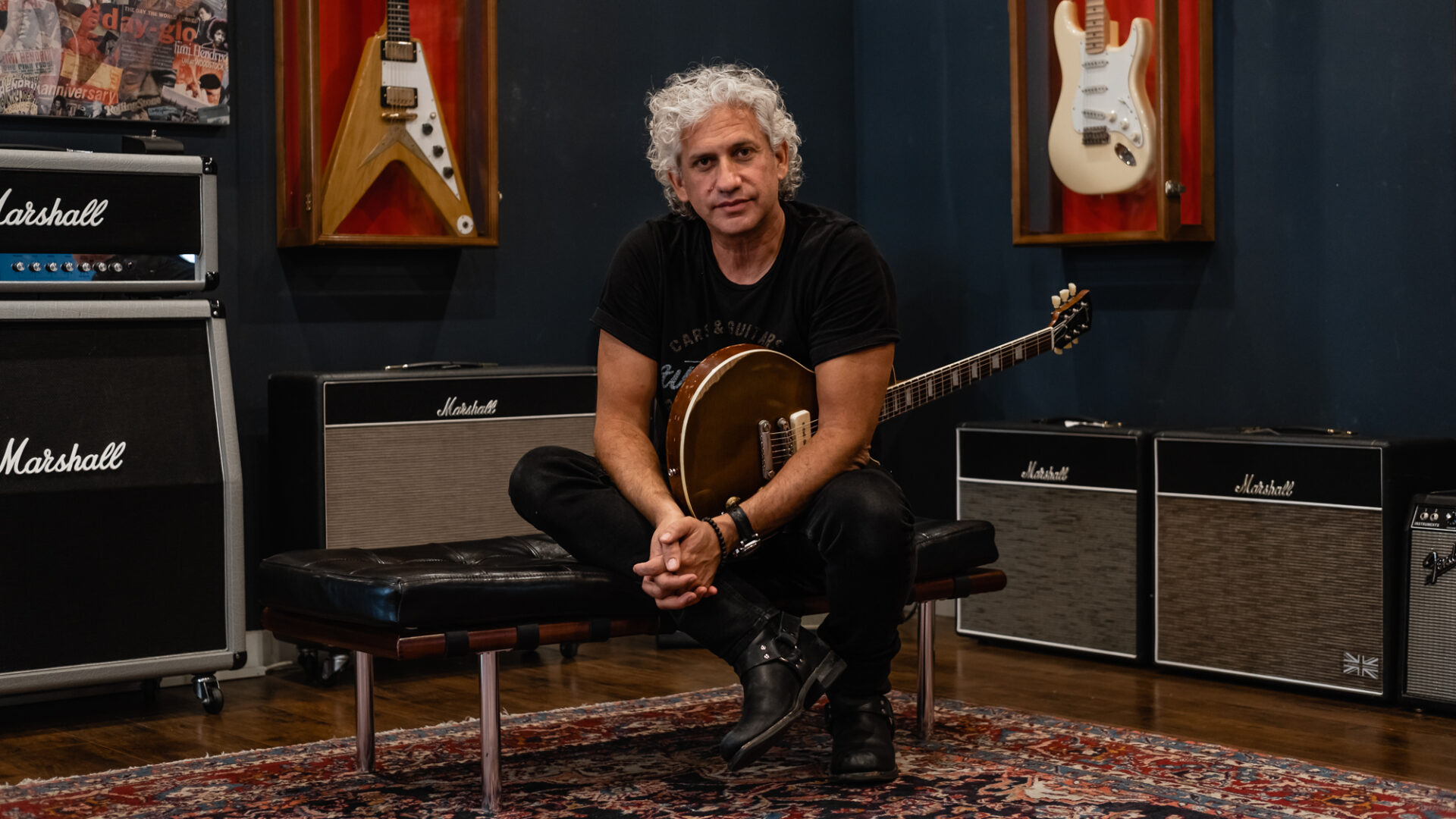
Goldstein’s second act spawned Walt Grace Vintage, which for the past six years has been a temple for Miami’s vintage auto enthusiasts, guitar nerds, and tourists drawn in by the universal allure of eye-popping guitars and a floor full of exotic old cars in a beautiful space. As the Walt Grace Team so eloquently puts it, they are “facilitators of dreams; a place where discerning collectors and casual admirers can experience the beauty and artistry inherent to what moves us— sonically, mechanically, and emotionally.”
For Goldstein, Walt Grace Vintage is more than a business: It’s the ultimate expression of his passions. A lifer guitarist and rock ‘n’ roll fan, an obsessive air-cooled Porsche enthusiast, and a lover of watches, Goldstein has done more than just surround himself with the things he loves the most – he’s made it his business to share those passions with the masses. In fact, the first time I visited Walt Grace and met Bill Goldstein, he saw to it that I played his personal 1959 “‘Burst” Les Paul through a cranked 100-watt Marshall stack before leaving. Now, any guitar aficionado will tell you that’s an exceptionally rare experience, but to do so in a room hemmed in by a Ferrari 288 GTO, a brilliantly restored Mercedes Benz 300SL Gullwing, and a Porsche 935 race car is something out of a fever dream. But those dreams come true on a daily basis at Walt Grace.

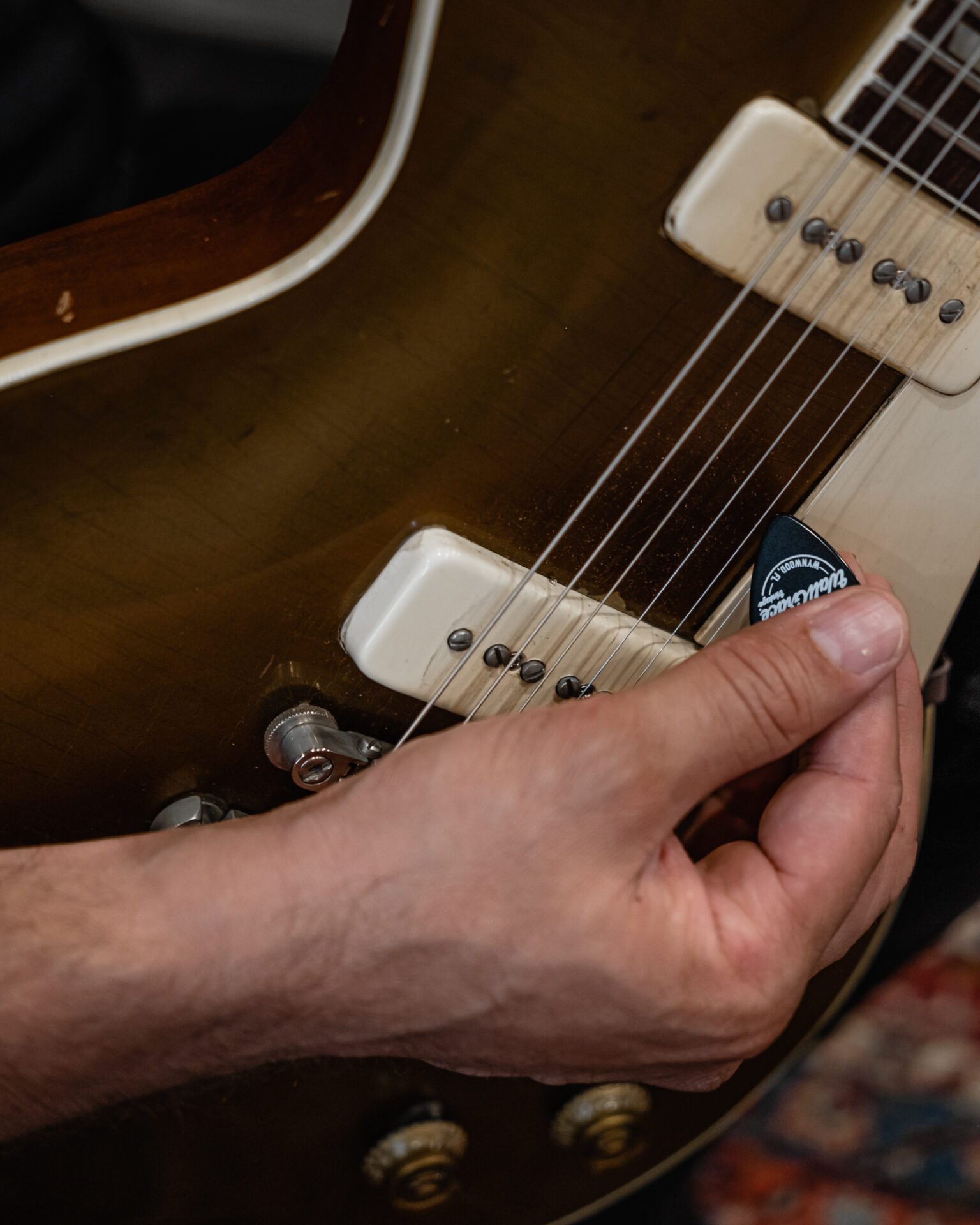
In the following interview, Goldstein discusses his past lives, his passions, what it’s like to wear Paul Newman’s actual “Paul Newman” Daytona, why Porsche and Panerai both move him more than any other marques, and why you should always listen to music in the shower. Goldstein is a fabulous raconteur, an affable interviewee, and a guy that’s finally living his dream.
What sparked the idea for Walt Grace Vintage? I know you had had a very long and successful career in advertising before it, why the drastic change?
I’ve been an artist my whole life; a musician, a writer, and even a computer programmer and I used to make really basic video games. I kicked around for a while with my band, then I decided to go to New York and go to the School of Visual Arts. I was the guy on the L train carrying the wet oil paintings on my way to class and getting paint all over the suits that were commuting to Wall Street. After school, I started one of the world’s first interactive-only advertising agencies, RAW Interactive. When I say the word interactive, I was creating multimedia advertising in a way that has really become how we interact with almost everything in today’s world. This was in 1991.
Every interview I did back then inevitably started out with “Bill Goldstein: Futurist.” I get a lot of credit for being one of the early pioneers of interactive multimedia, but it was a byproduct of my indecisiveness as a creative and I just couldn’t decide what I wanted to be or do. One day I said “I’m not going to choose. I’m just going to do it all.” And there really wasn’t a path or a book to read about interactive multimedia. I started it in my apartment in my underwear with one computer and just built this thing every day – just went to work and reinvented the wheel.
Ultimately, it became a really successful business and was certainly one of the world’s first interactive-only advertising agencies. The work was creative and I didn’t feel like a sellout – I didn’t feel like I was letting my inner artist down. My new canvas was clients’ restrictions and specifications and they built this kind of invisible box for me to paint and we created new solutions every day. However, the longer we were in business, the more people tried to get us to repeat ourselves because they liked work we had done for other clients. It just became a business and that wasn’t for me. I sold the agency, moved down to Miami, I had a daughter, and I was unsure of what I was going to do next.
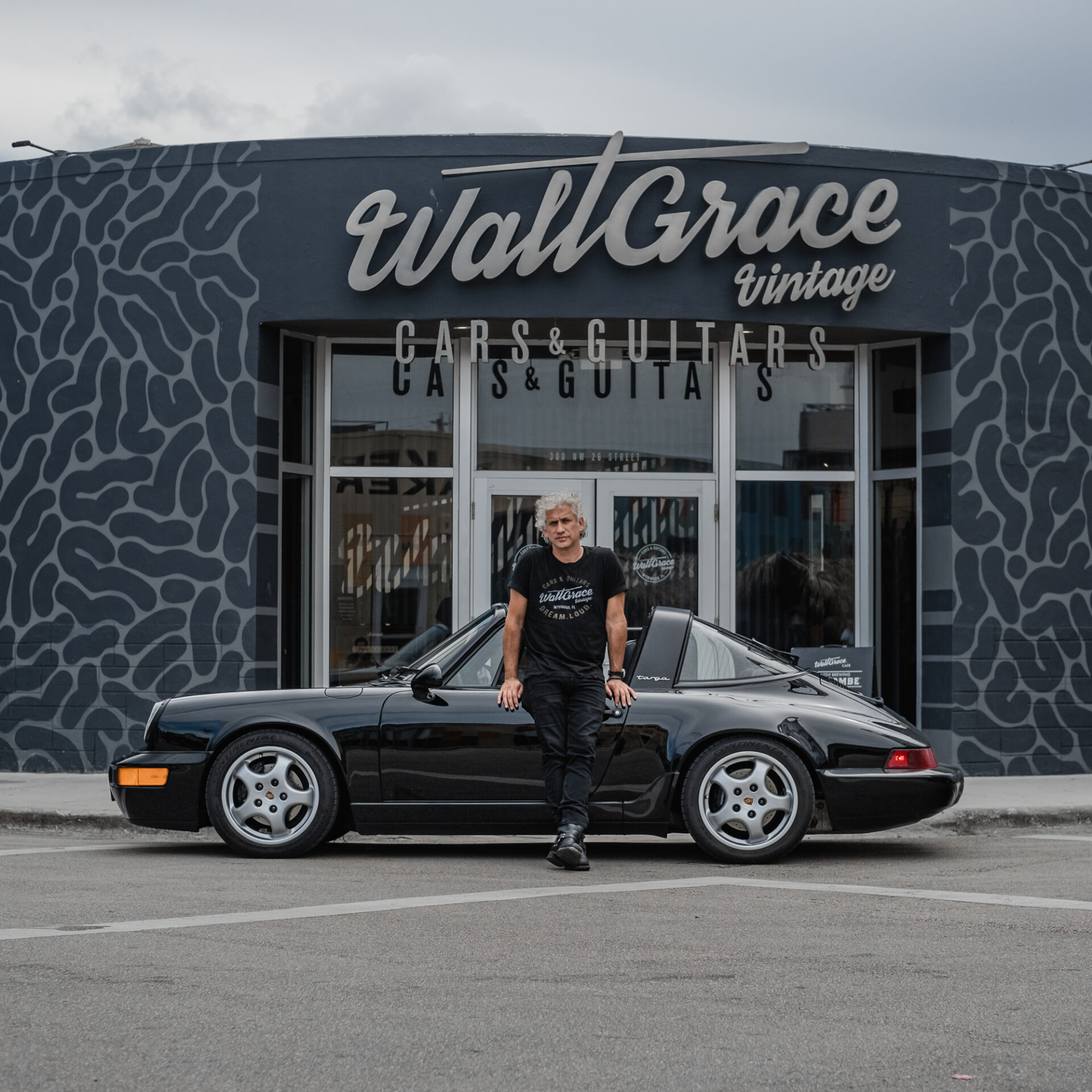
Where’d you go from there?
It was really hard to go from reinventing the wheel every day to “Honey, I asked you to take out the trash.” I was stir crazy at home, so I found this little digital ad agency in Miami and had a lunch meeting with the owner; I had applied to be an Associate Creative Director and I left the meeting as Managing Director of the entire agency. I worked there for years, then we were acquired and I became the Global Head of Creative Strategy for a 10,000-person company with 36 offices around the world. But I found the more successful I got, the further away I got away from that kid on the L Train, and the further I got from really being creative.
It became unfulfilling and it was a lonely place to be because everyone was like “See the lucky man that made the grade!” because I was doing so well outwardly, but it was really the saddest time in my life. I was completely miserable and I couldn’t figure out what it was. I was an ad guy, I’d always been an ad guy, and I just figured I’ll always be an ad guy.
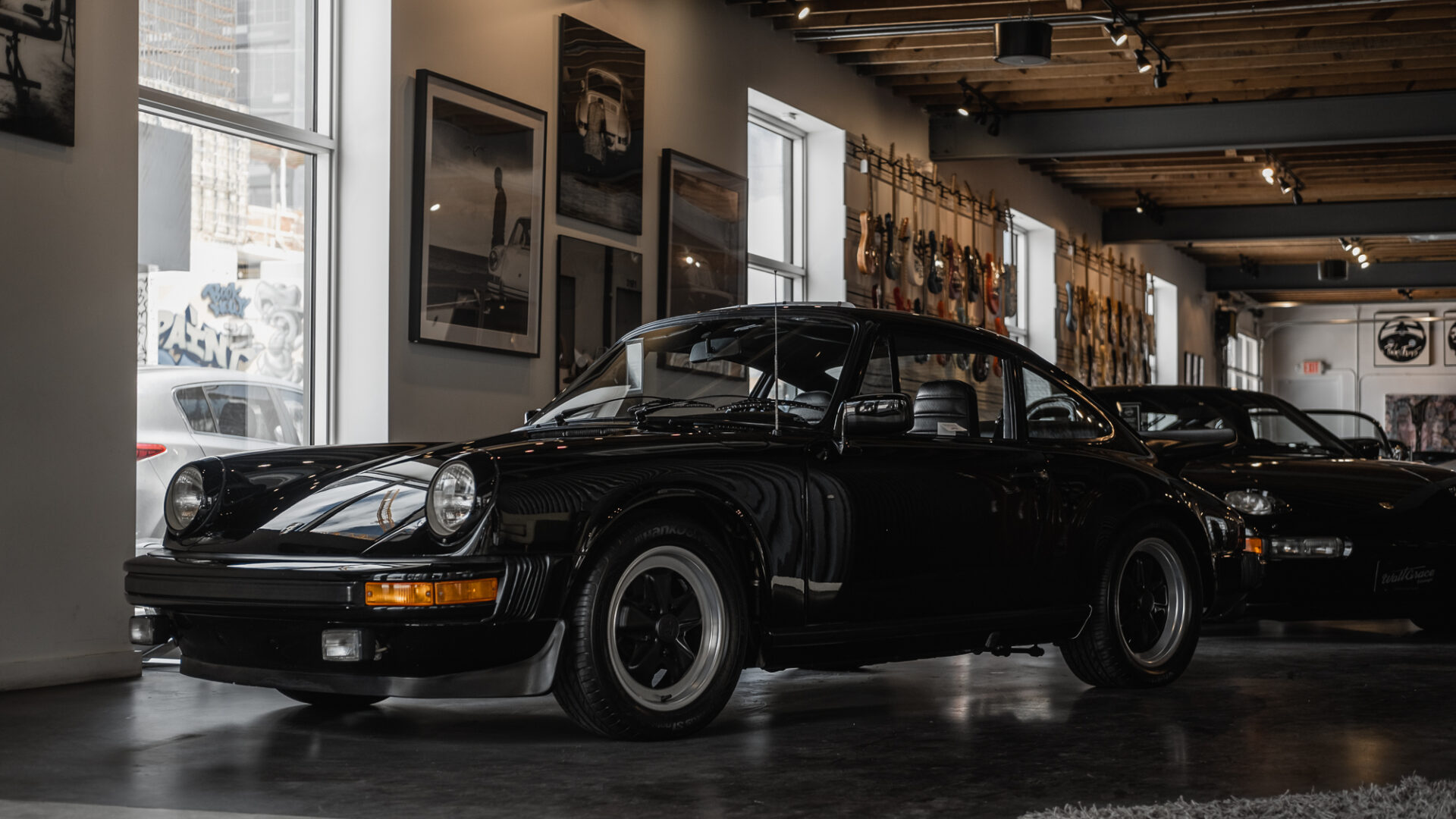
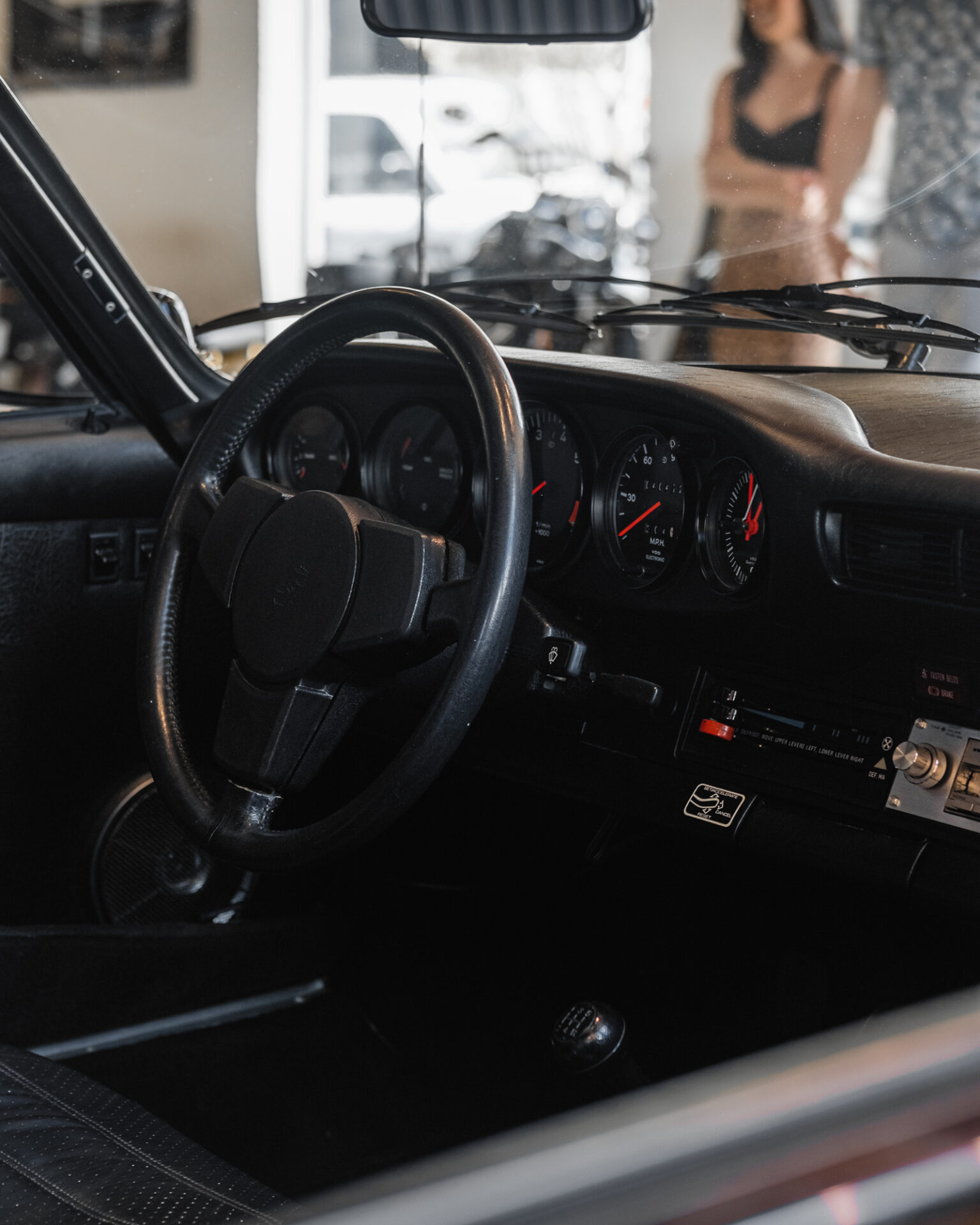
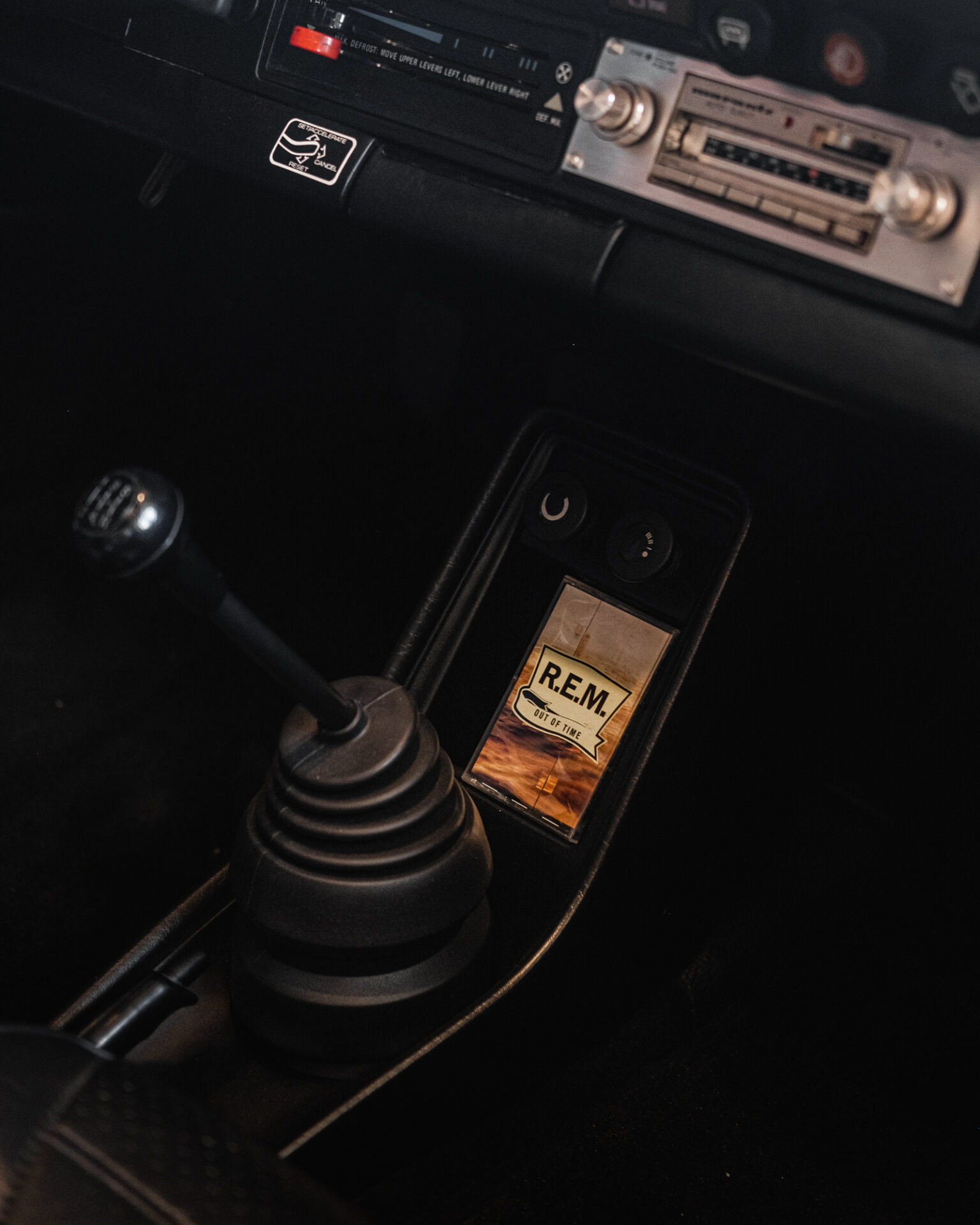
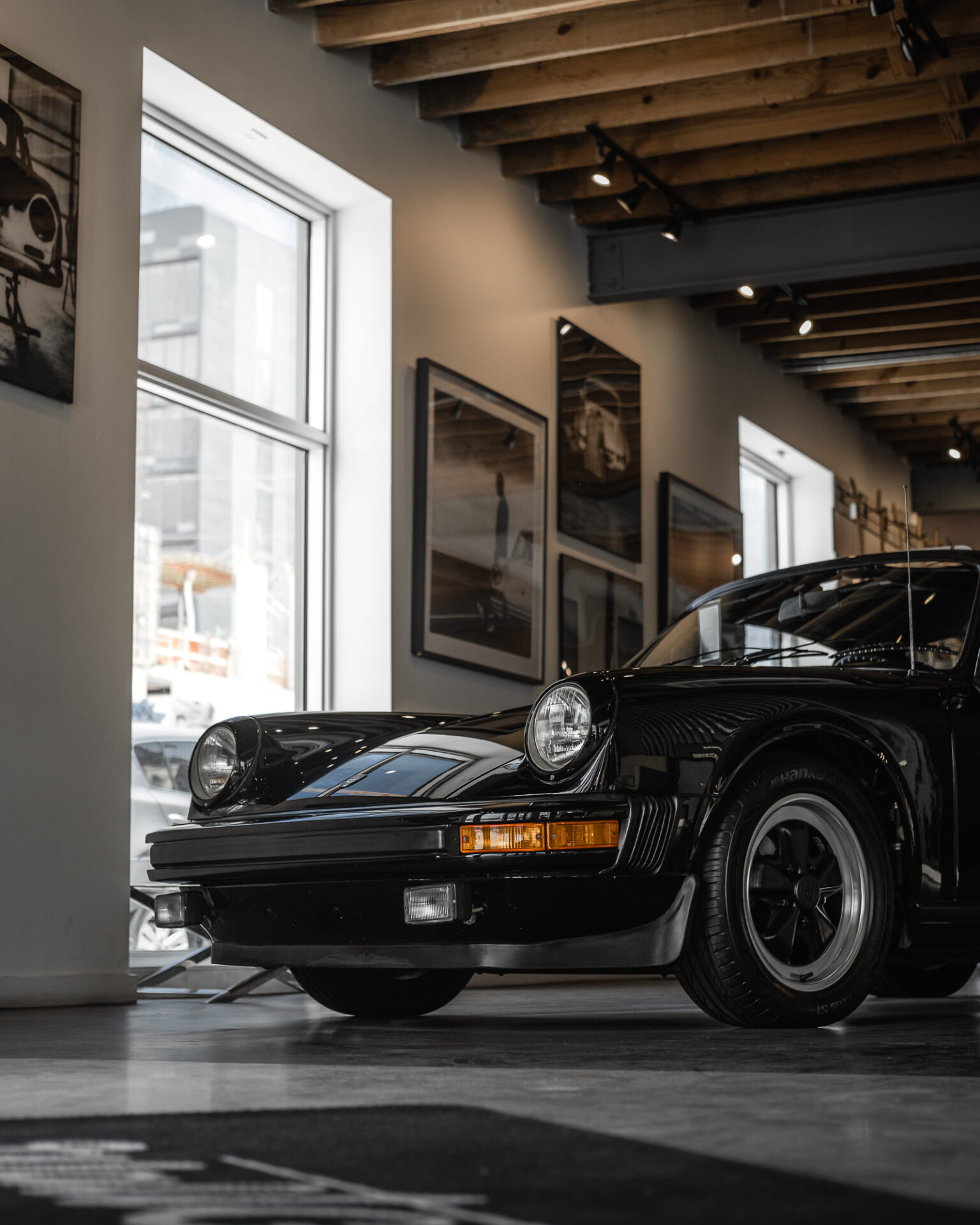
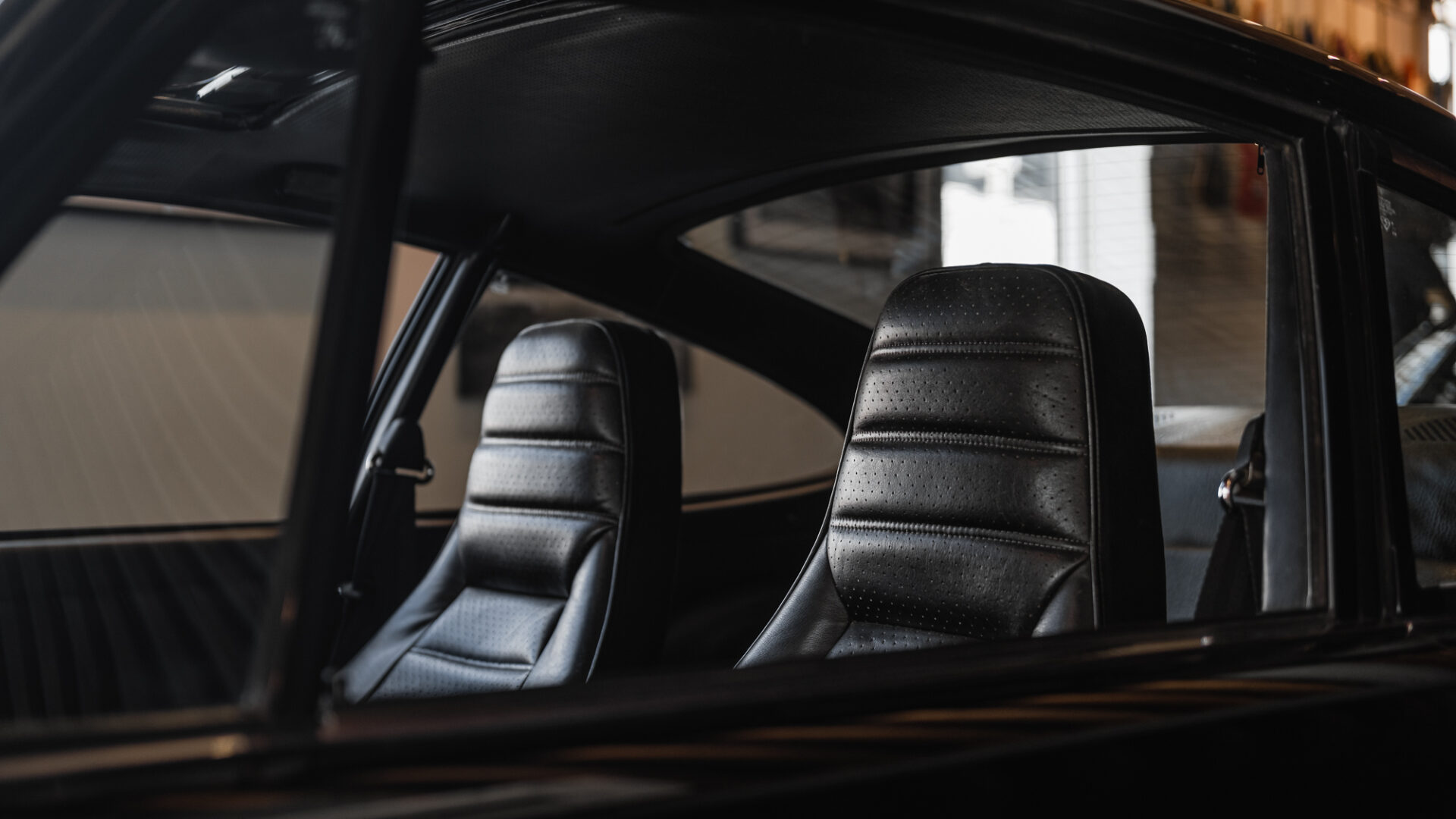
They say it’s lonely at the top. How did you find your path out?
I was in the shower one morning getting ready for work and listening to a Pandora station, and a song came on that caught my attention. It had a trumpet intro that caught my ear and sounded like Miles Davis, so I listened closer. The song was about a guy who desperately hated his situation and “dreamed to discover a new space.” The story sounded so familiar. The guy in the song wanted to build a homemade submarine in his basement and I thought “A homemade submarine made out of lawn mower parts isn’t so far off from an interactive ad agency in an apartment in 1991.” In the song, it says “his wife told his kids he was crazy, and his friends said he’d fail if he tried, but with the will to work hard and a library card, he took a homemade one-man fan-blade submarine ride.”
I go “Oh my God! This song is about me!” I had an epiphany and the solution to all of my unrest and anxiety was in that song somehow. I didn’t even know who was singing yet – though it was a familiar voice. I still get chills telling this story! I turned off the water to hear the lyrics better and the catalyst for my life from that day forward came in the form of the chorus:
“When you’re done with this world, you know the next is up to you.”
I said “Holy fucking shit! It is up to me. I don’t need to do this.” I just thought I’d always be an ad guy, but I didn’t need to be an ad guy anymore. If it wasn’t fulfilling me and I wasn’t being creative, I could just stop. For some reason, that simple concept eluded me and I thought I had to do something just because I was good at it and had always done it.
I realized right there – naked in the shower – that I wasn’t going to do it anymore. I related to the song like nothing else I ever had in my life. I dried off my hands just enough to unlock my iPhone, called the agency and said “I quit!”
They said “What agency are you going to? We’ll triple your salary!” And I said “I’m not going to another agency. I’m going to go find my submarine.” I was going to find out what meant something to me.

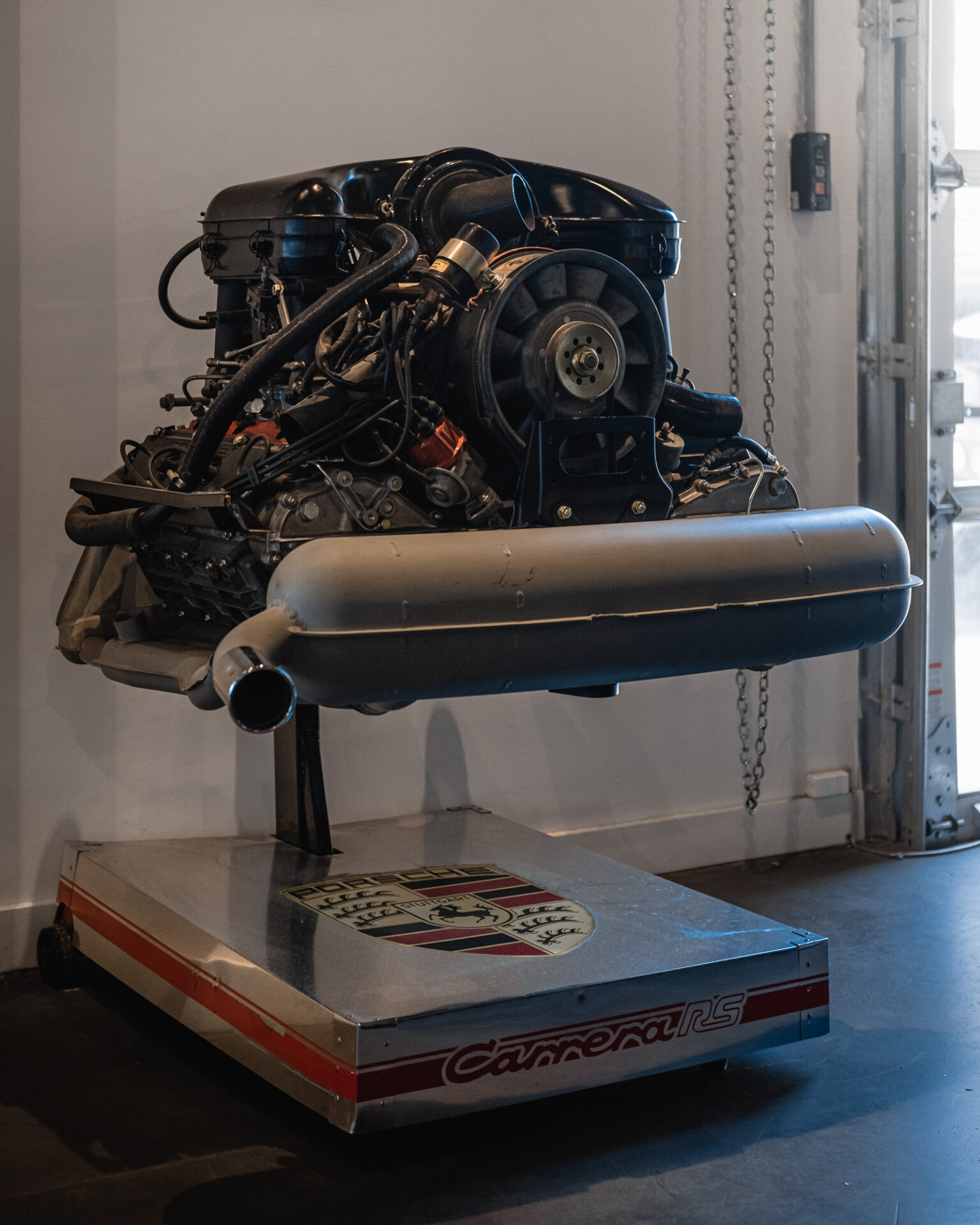
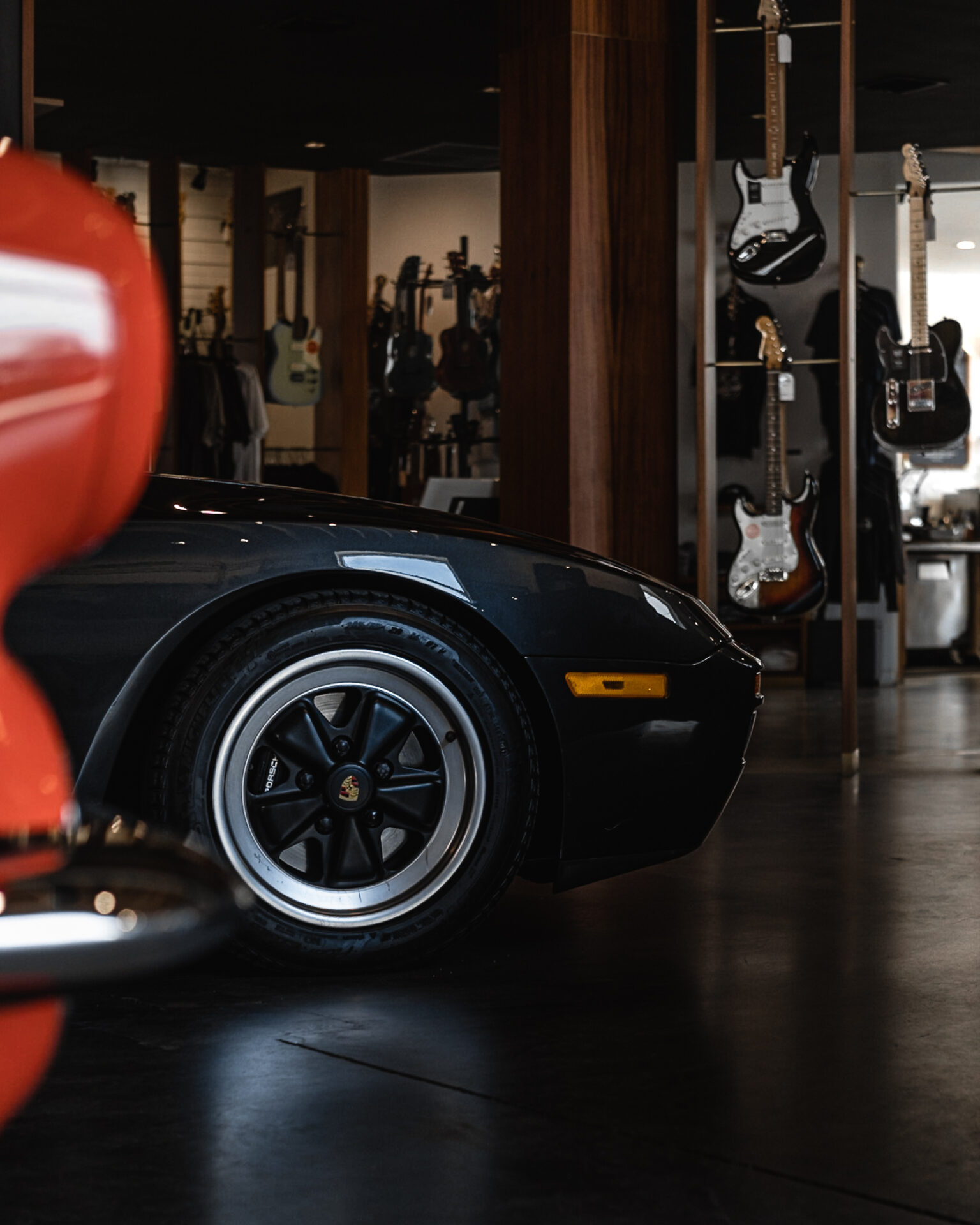
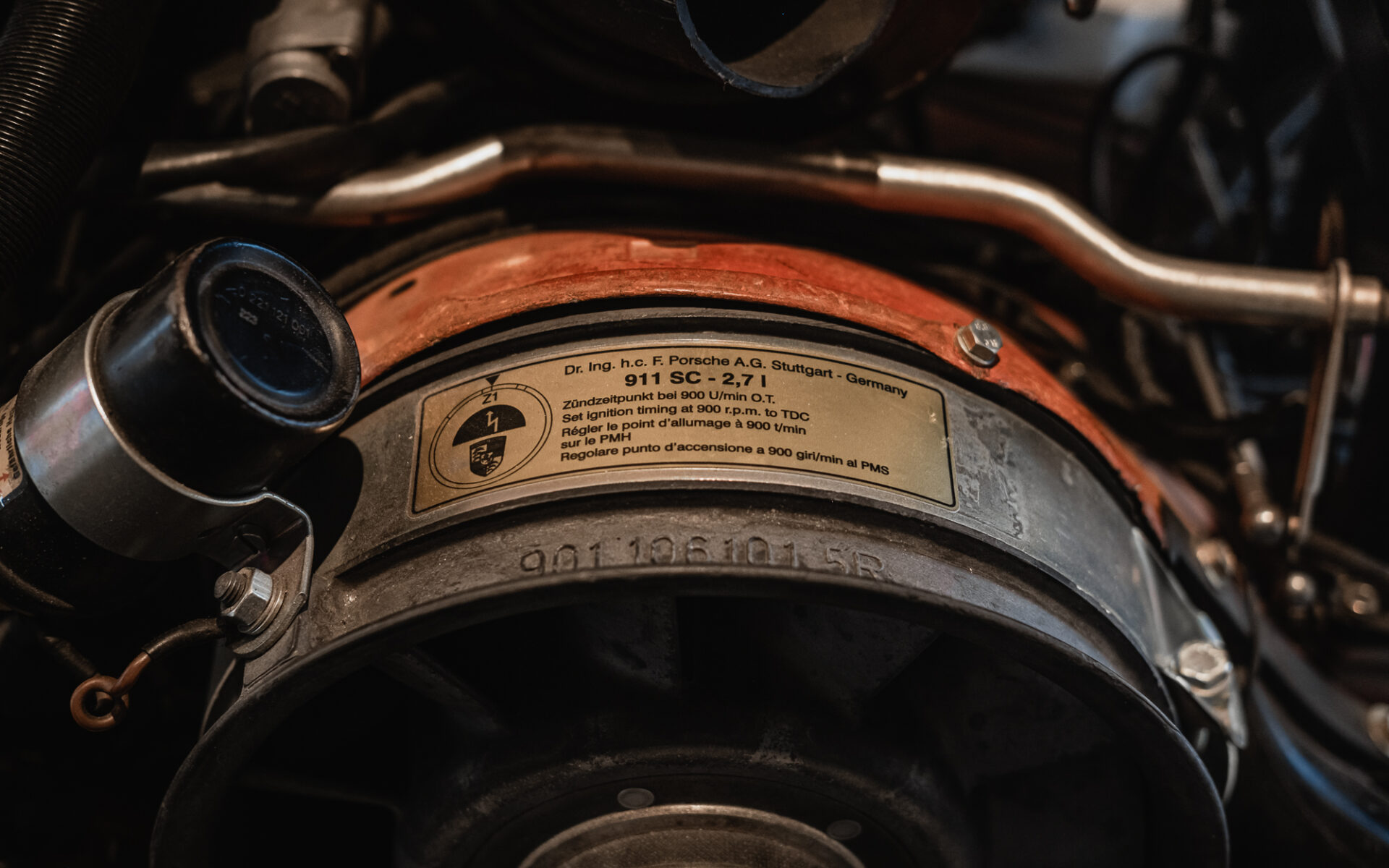
How did you land on the concept of merging a vintage car and vintage guitar shop after quitting so impulsively? It makes so much sense after seeing it in-person.
I thought “What is it I love doing when no one else is around?” I realized I wanted to do something with vintage guitars; I love them as a player, a collector, and an aficionado. Then I thought “Oh! But I have this sickness and obsession with vintage Porsches…maybe I’ll do something with vintage Porsches and cars?”
I’m debating between vintage cars and guitars, and I hear that chorus again in my head. It was like a movie – I’d only heard it once in my life – but it was like the heavens parted and I heard “When you’re done with this world, you know the next is up to you.”
And I said “I’m not going to choose. I’m going to open a vintage car and vintage guitar gallery.” Not a car dealership and not a guitar store: A gallery. I’m going to celebrate the artistry of vintage cars and vintage guitars, not the utility of them. I’m going to open it in the Wynwood arts district of Miami, and I’m going to call it Walt Grace Vintage. The reason? Walt Grace was the name of the man in the song who dreamed of building his homemade submarine. It turned out to be a John Mayer song called “Walt Grace’s Submarine Test, January 1967”. I said to myself “I am Walt Grace!”
Fast forward to today and I’m sitting here with a credit card offer on my desk written to a Mr. Walt Grace, so I think I might actually be him now!
I love that the gallery is such a natural marriage of your passions. Coming from the guitar world and winding up in the vintage watch world, I’ve found that anybody that’s passionate about any vintage thing seems to have the capacity to be passionate about the next. The walls between all of these worlds are thinner than most of us realize.
When I started out, I’d say “God, I’m just fucking crazy. These couldn’t be two more disparate things!” Of course I knew both were sexy, have beautiful lines, and even share the same color codes for their finishes sometimes. And you quickly start to realize how often they’re intertwined in popular culture, but I still thought it was a little insane as a business. What’s unbelievable to me now – after having certainly hundreds of thousands of people come through our door – is just how many people are vintage car and vintage guitar freaks, and don’t favor one over the other. It’s insane how they overlap. And the third element is always watches. Everyone always has their third thing that they recommend I add to the gallery. The night of our opening party, Lenny Kravitz said to me “The only thing that would make this any better is if you had a dispensary in here also! Cars, guitars, and weed.” People say “You should have cigars in here! You should serve alcohol!” But the truth is the absolute number one third item that gets suggested is watches.
Funny enough, watches are probably my true third passion, but I couldn’t add any value to that business. I love nice watches and I know the basic stuff, but I wouldn’t know enough to do it the right way. Cars and guitars are what we know, what we can share authentically, and things we can enrich people with when they come here.
As cliche as the word “authentic” can be, it’s paramount to what we do here; one of the reasons I was so unfulfilled in advertising is that I realized I basically lied for a living. I wasn’t outright lying, but I was manipulating and preying on people’s insecurities to make them purchase things they probably didn’t need. And I was really, really good at it. Around the time my daughter was born, I had another major epiphany where I realized that what was most important to me – more than anything – was that I’d like to be the man my kids thought I was. They certainly didn’t think that I exploited people’s weaknesses to make them buy things for a living.
So I had this need to be authentic and when I started Walt Grace Vintage, it was really important to me that people can come here and leave better than when they came in. A lot of the knowledge I’ve amassed throughout my life is absolutely useless outside of these four walls, so I created a place where people can come and ideally learn as much as they would at a museum; if they wanted a crash course in air-cooled 911s or ‘59 Les Pauls, we were here to chat. It’s really important to me that we’re not just selling people and we never do any kind of sales tactics. We’re facilitators. We don’t sell anything. No one needs anything that we sell, so if someone’s on the fence about a guitar — contrary to what Guitar Center or another dealer might do — we encourage people to sleep on it, but not in the traditional sense! We tell them if you’re able to sleep easily that night or wake up not thinking about the guitar, it wasn’t for you!
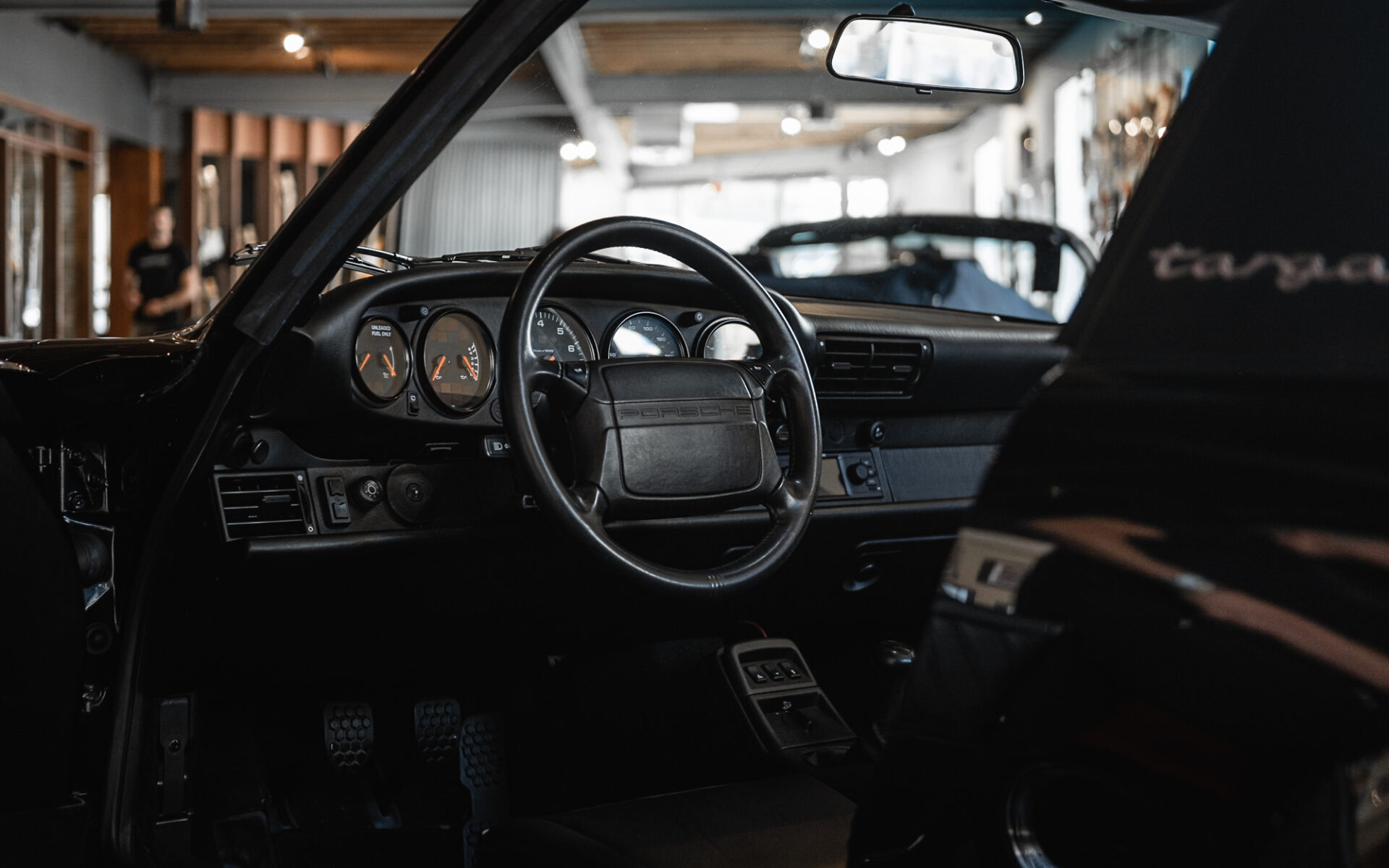
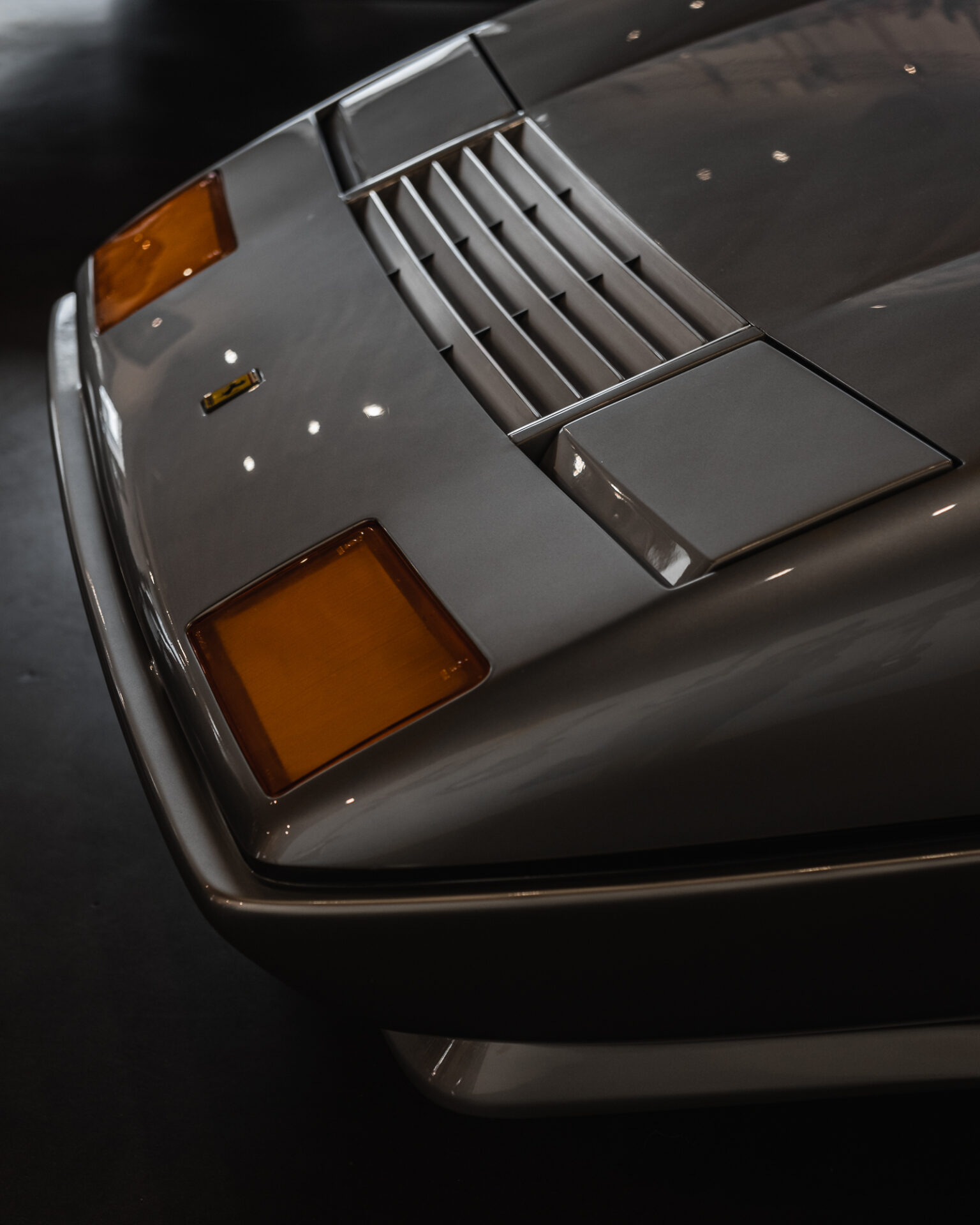

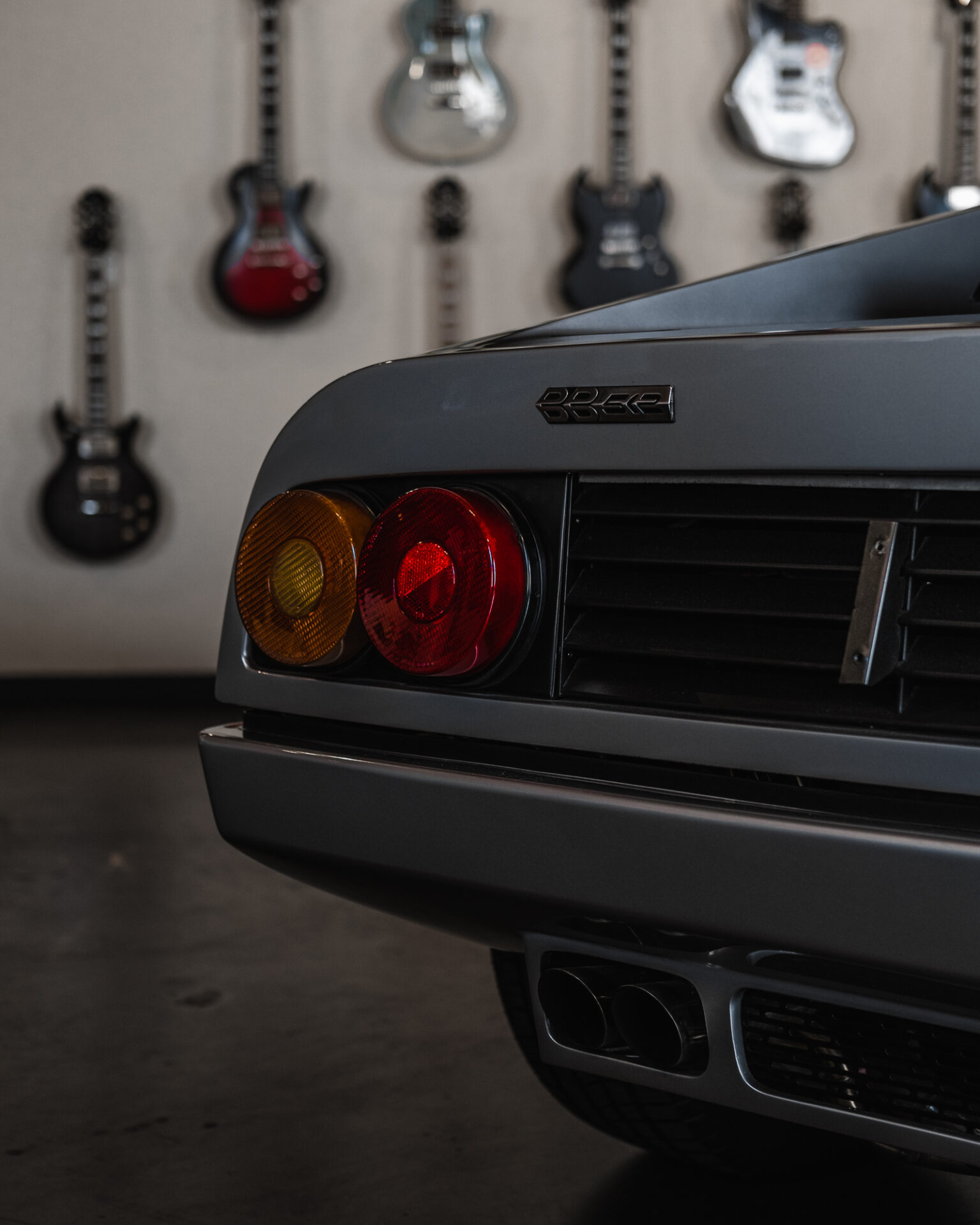
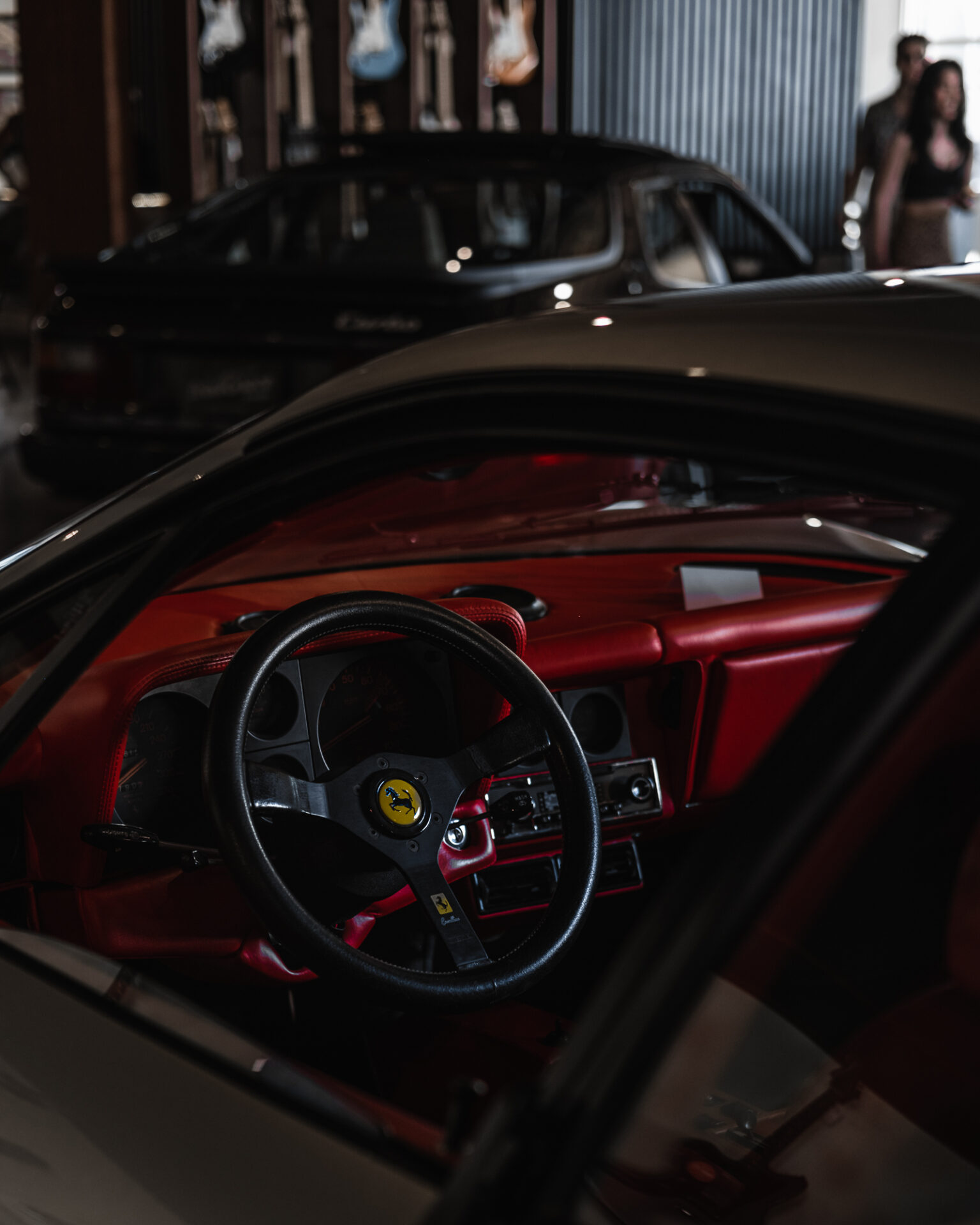
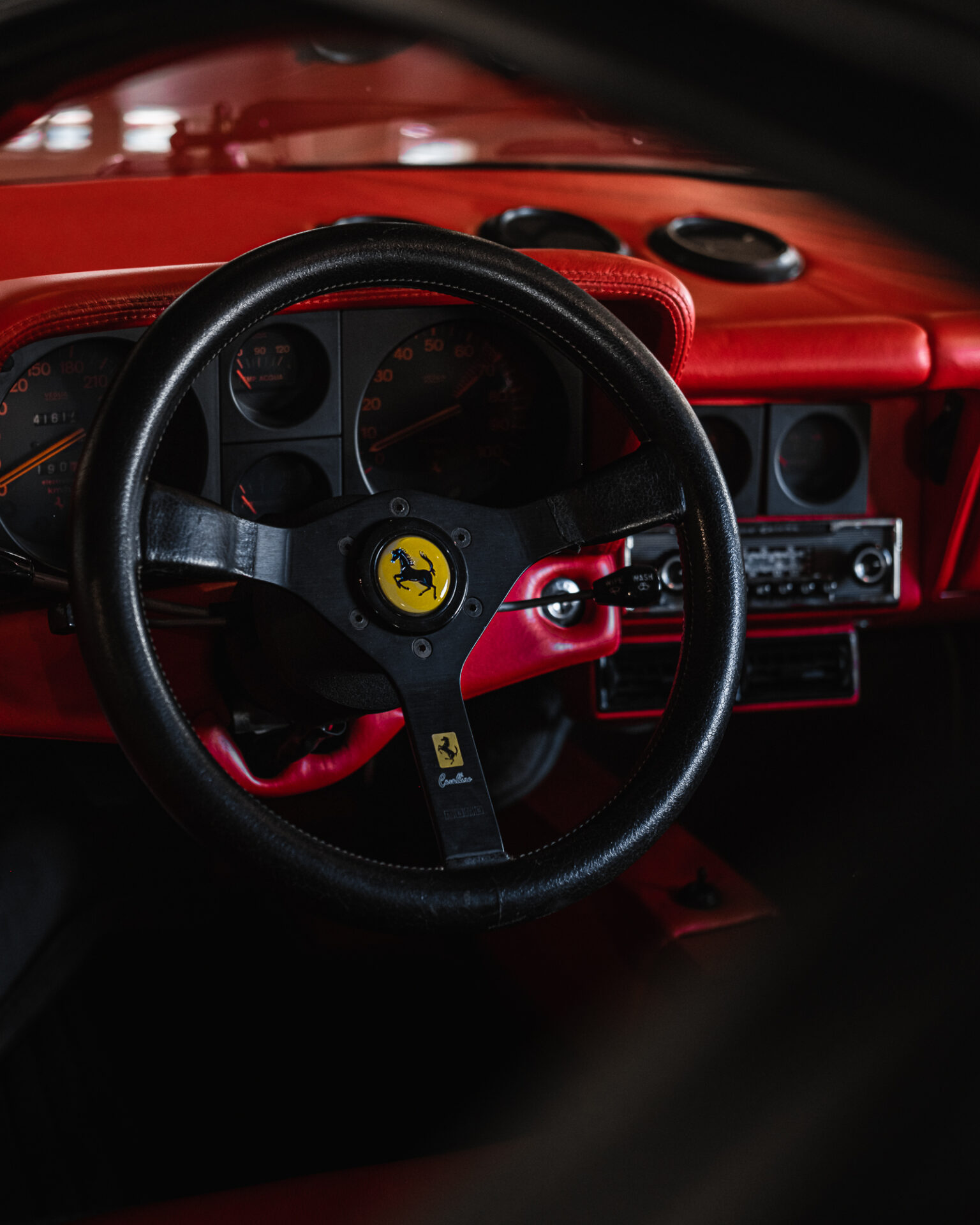
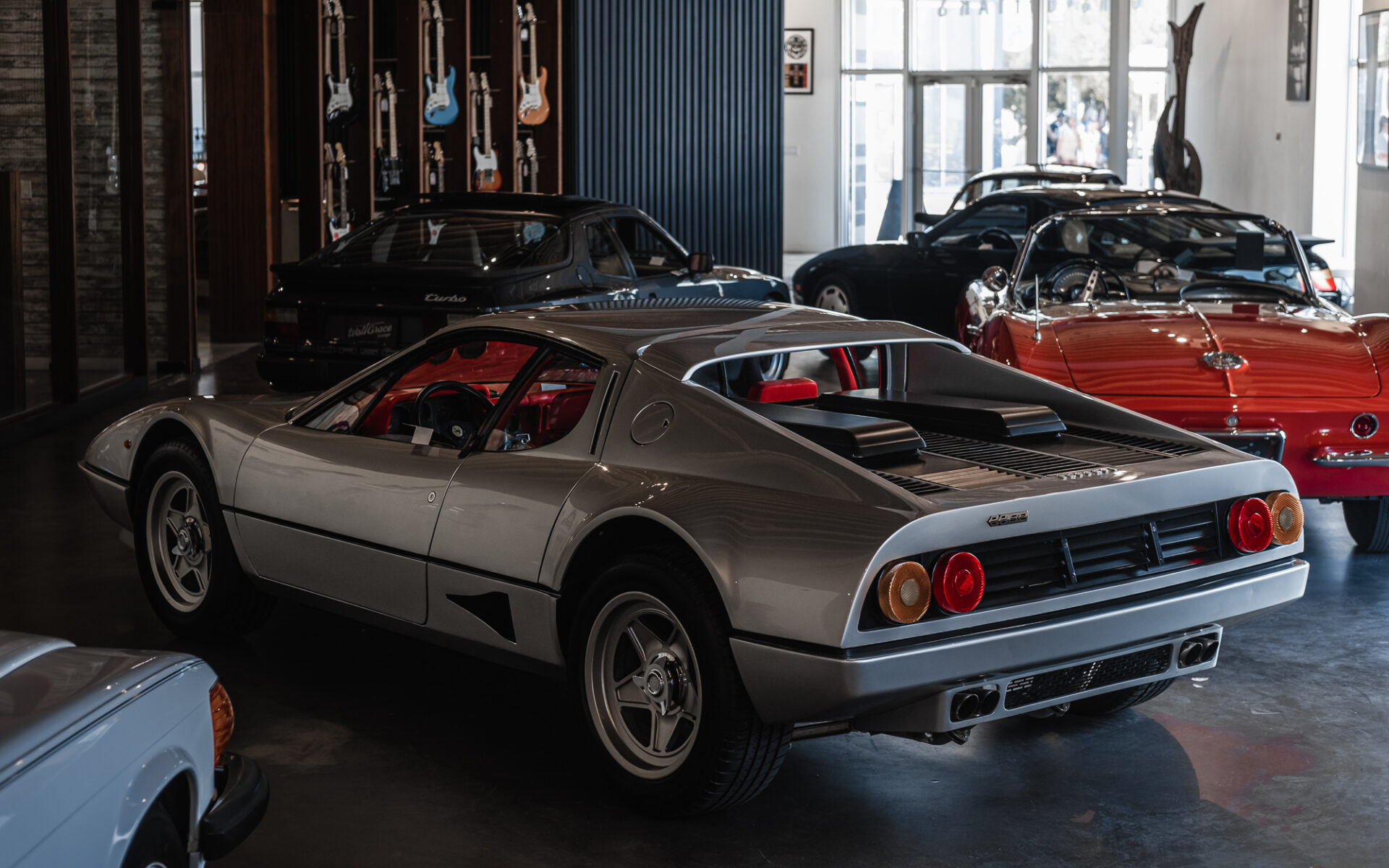
You’d mentioned feeling starved for culture when you first came to Miami. I worked there for many years as a music journalist and I found that it’s always been under-the-radar as a rock ‘n’ roll town and you had to dig to find that side of things, but it’s always had an interesting music and arts community if you knew where to look. What’s your experience been like engaging with that side of Miami?
When I first moved here, I used to say a horrible thing, which is Miami’s got rhythm, but it ain’t got soul. Now I’ve since been proven wrong, but you do have to peel off the superficial hard candy shell. When I opened Walt Grace, I had a strict no-advertising policy and I wanted it to be all word-of-mouth. What I found by doing that was that the caliber of musicians that came through our doors was unprecedented, and I was shocked by the amount of rock players and blues players and jazz players that came through. Musicians you don’t necessarily expect to live in Miami. I’m still consistently shocked by the depth of the musicianship and knowledge and unexpected influences that the people that visit the store have; young kids that can play Albert King stuff perfectly and really know where it comes from! It’s been really eye-opening and really inspiring, and unexpected.
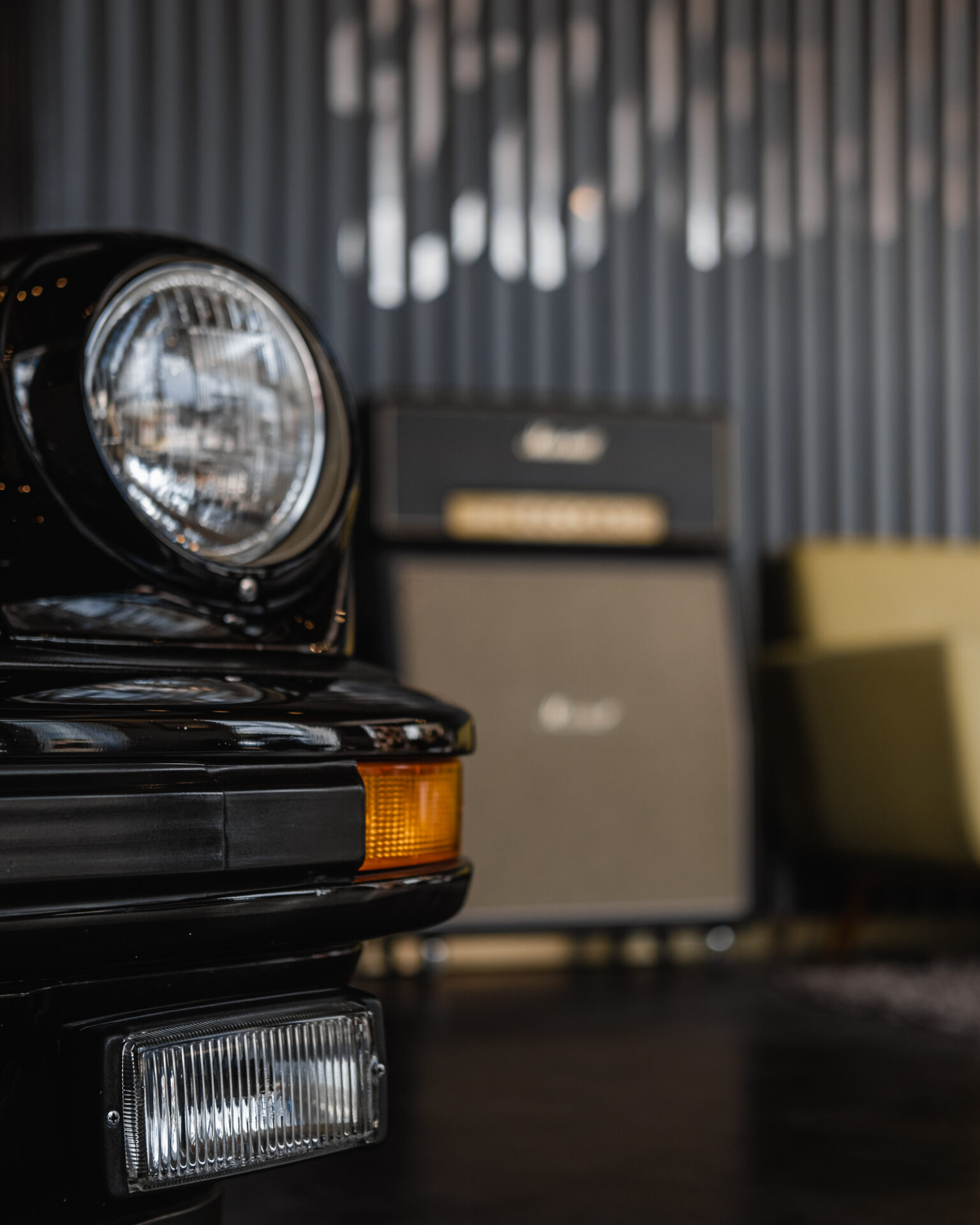
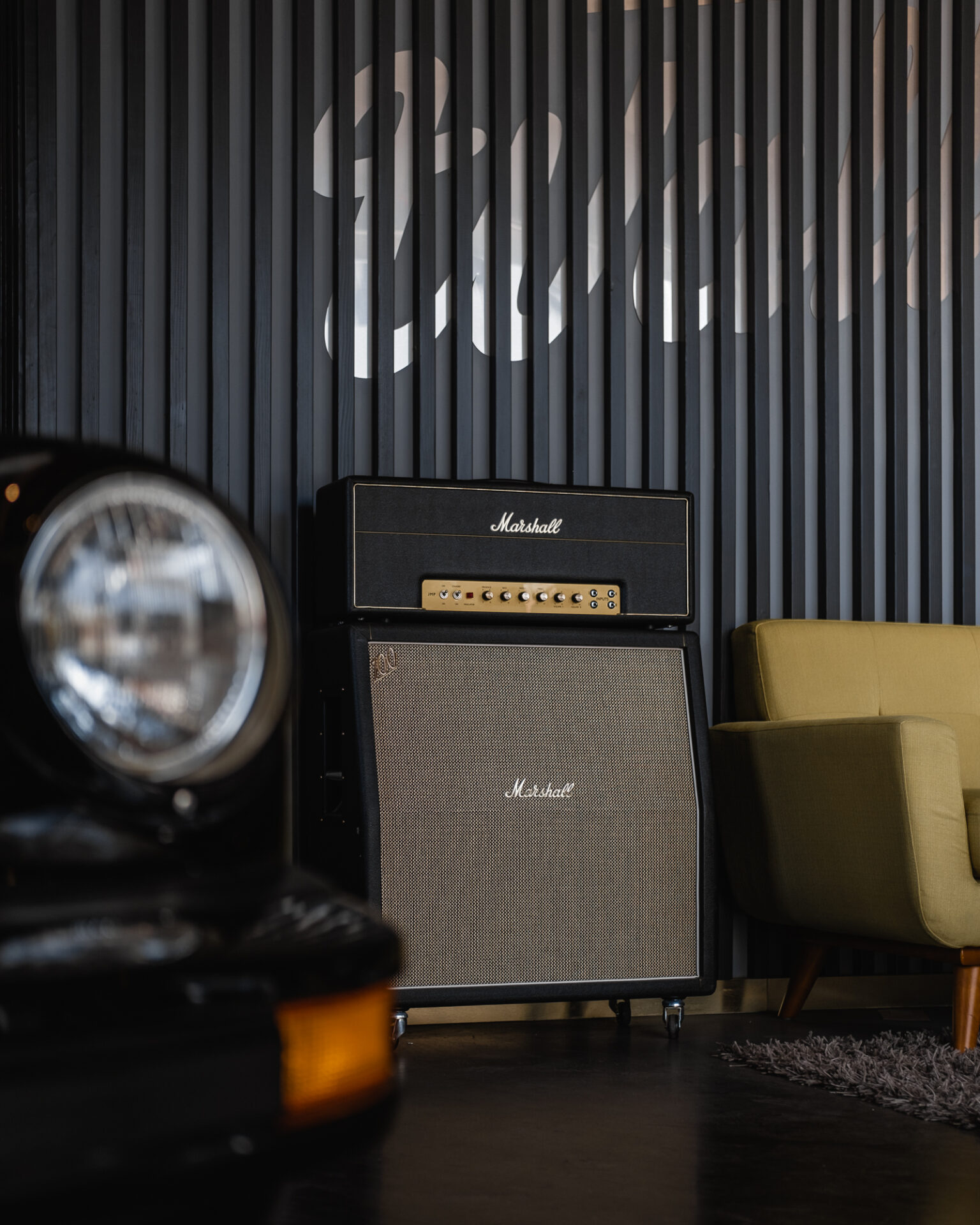
On the opposite side, Miami’s always had an incredibly strong car culture, and especially exotic and vintage car culture. How has that grown since you’ve opened the shop?
I didn’t think there was a lot of appreciation for the classics when I first opened. People would come in and say “Oh wow! This is cool! Is this the car from Back to the Future? Is that the car from Bad Boys?” Any car that’s the slightest bit pointy or low is automatically the Back to the Future car to a lot of people! People didn’t know what they were looking at and it felt like watching people at a museum who thought they were looking at ancient artifacts. There wasn’t a lot of vintage car culture that I was exposed to here early on. There’s of course an underground for everything, but you’d be at a traffic light and surrounded by four new McLarens or Lamborghinis, but not much vintage anything. And there certainly weren’t a lot of dealers down here doing vintage. That was six years ago and if I wanted to go to all the vintage cars and coffees around town on a Saturday and Sunday, it wouldn’t be possible. I couldn’t even fit them all in. There’s a huge vintage car culture here now.
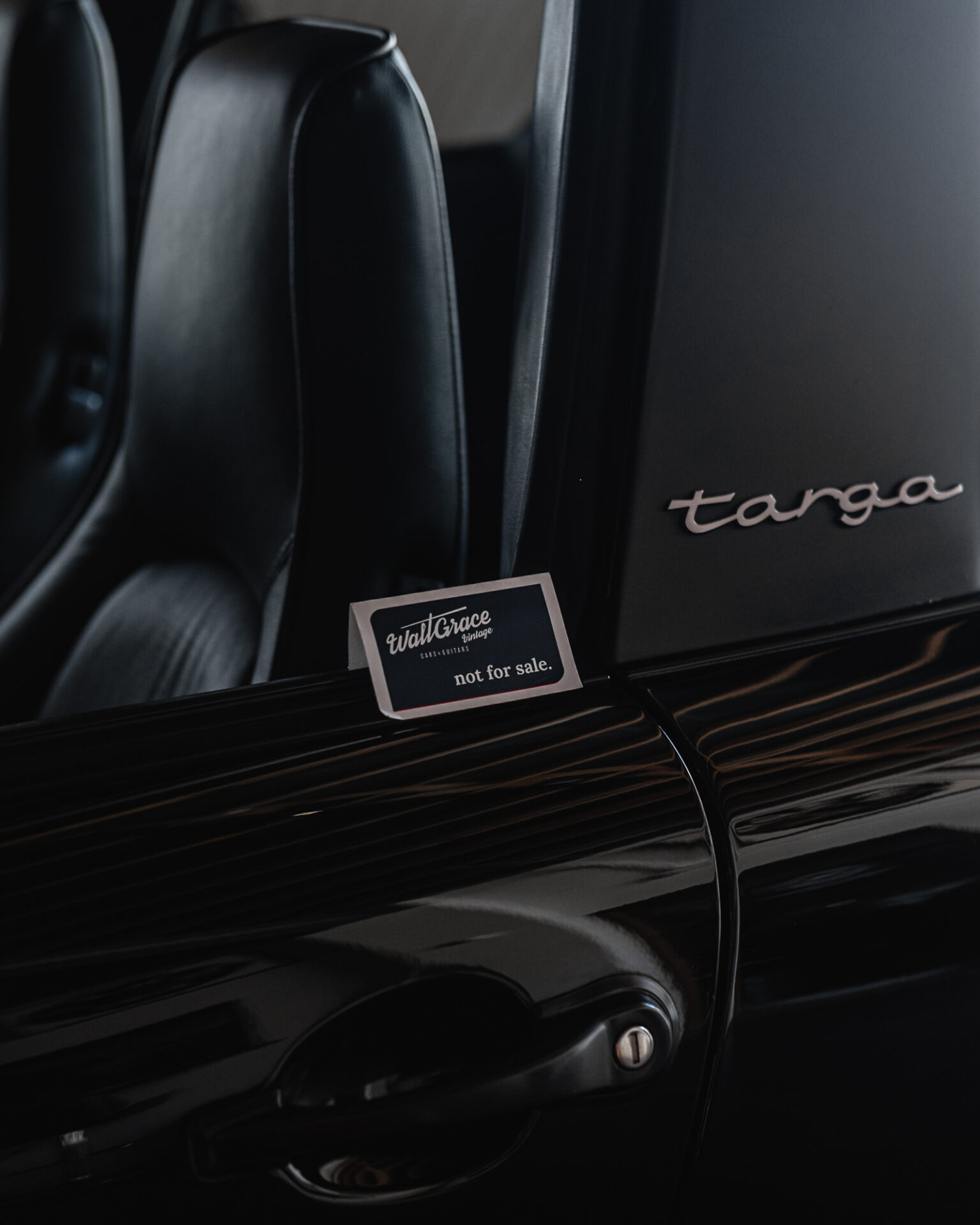
I remember my first time coming into your store when you were in the first location and you had a ‘60s Ferrari 250 California, a Ferrari 288 GTO, and a ‘76 Kremer Porsche 934/935 Turbo RSR race car, and some other serious whale cars in the shop. What are some of the most memorable cars that have come through and left an impression on you personally as an enthusiast?
Well, you named three of the best. When it comes to guitars, I’m an equal opportunity lover and I love them all for different reasons. On the car side, I’m not actually a car guy – I am a Porsche guy. And I’m not actually a Porsche guy – I’m an air-cooled 911 guy. 1964 to 1998 911s – that’s where my passion sits firmly. So you mentioned a ‘63 Ferrari 250 California that came through the doors, or even modern cars like a Porsche 918 Spyder or a Ford GT. I respect them, I love them all for what they are, but my favorite car that’s ever come through the doors here is the car that I drive every day. It’s a 1992 Porsche 964 C2 Targa. It’s not the most expensive car, it’s not the rarest car, but it’s my baby and I love it.
I’ve had the car since October and I still look back at it every time I get out, I still take pictures of it every time I’m walking up to it, I still post it on Instagram. That’s what these cars need to do! They need to move you not just physically, but emotionally as well. So what moves me is my 1992 C2 Targa.
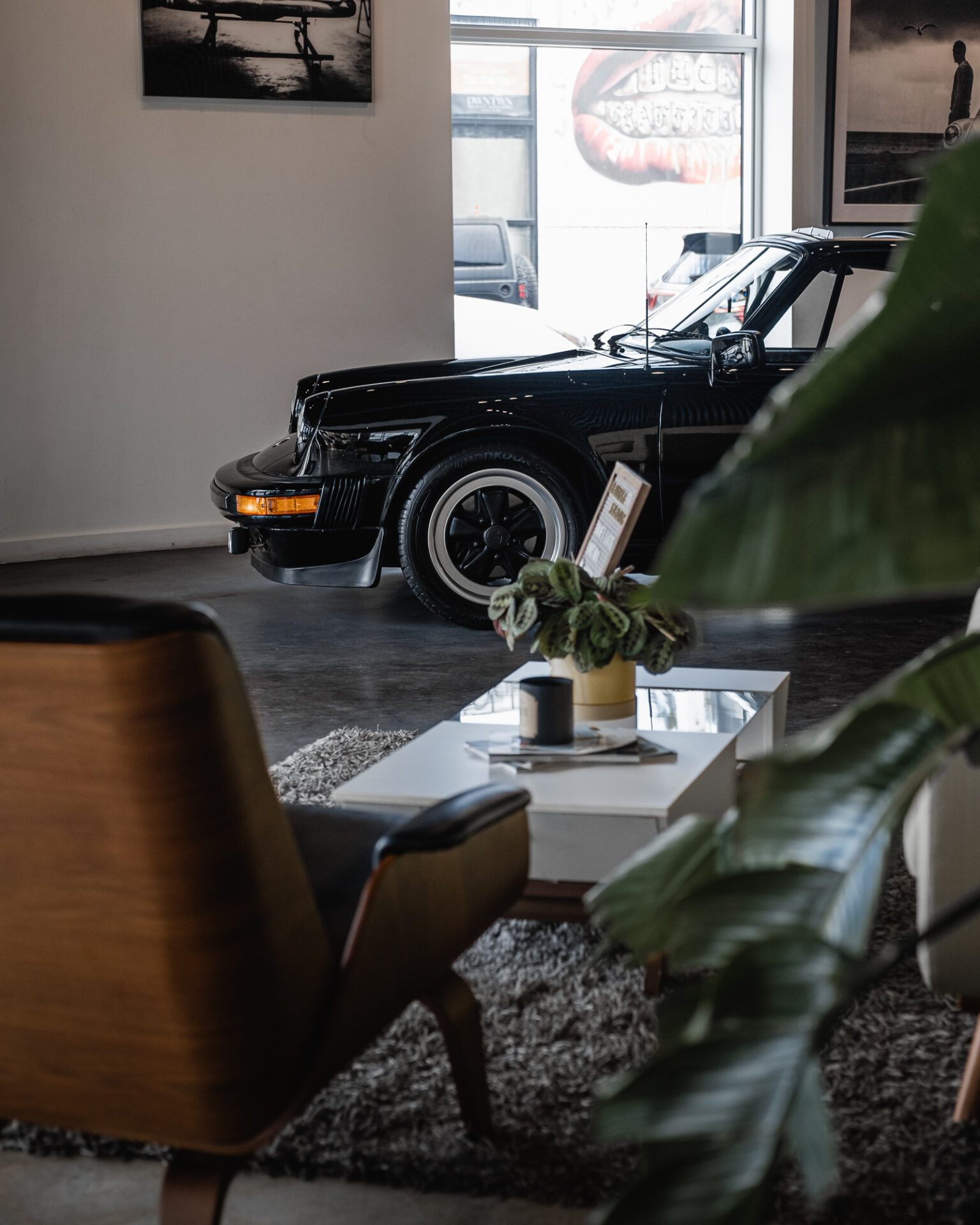
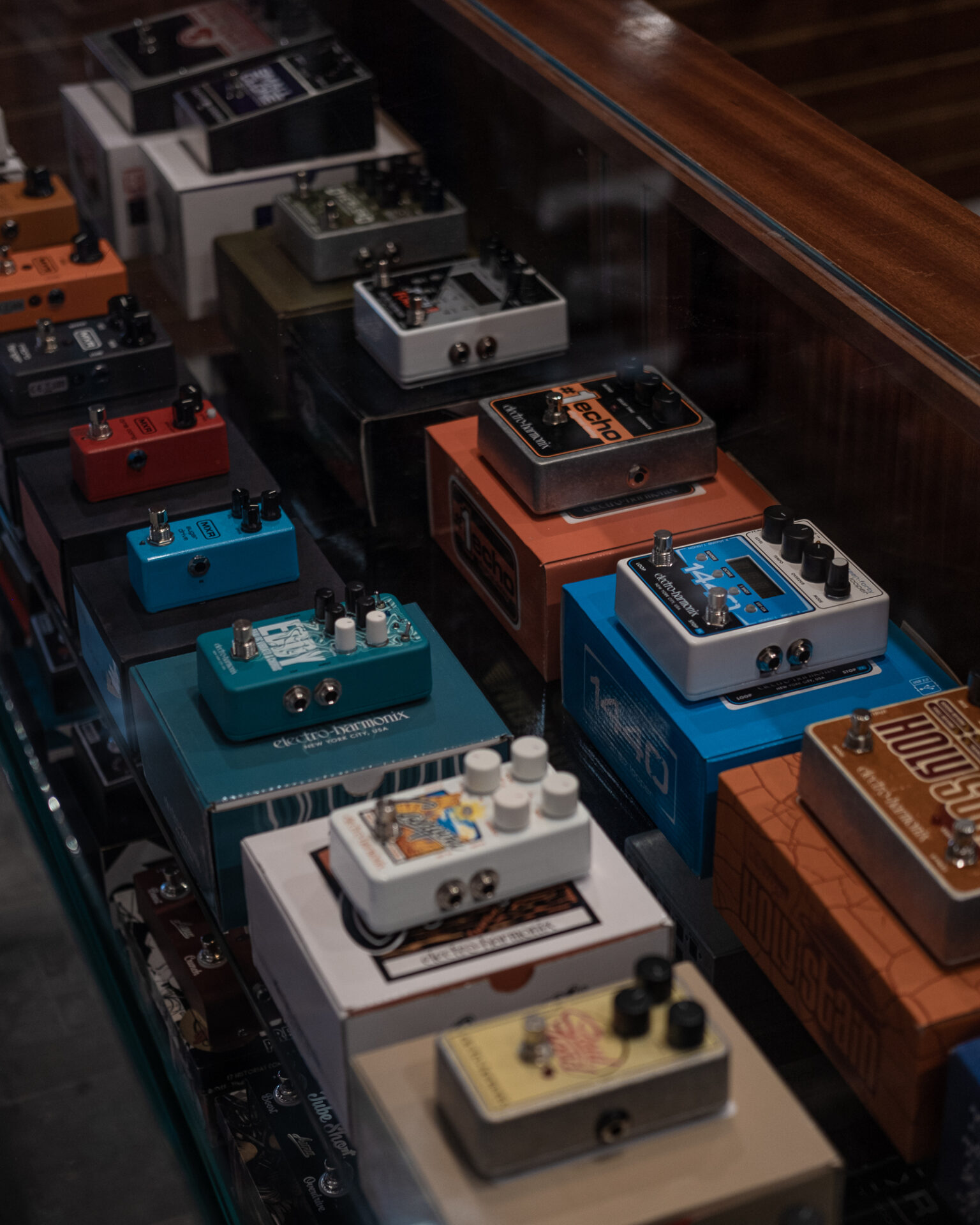
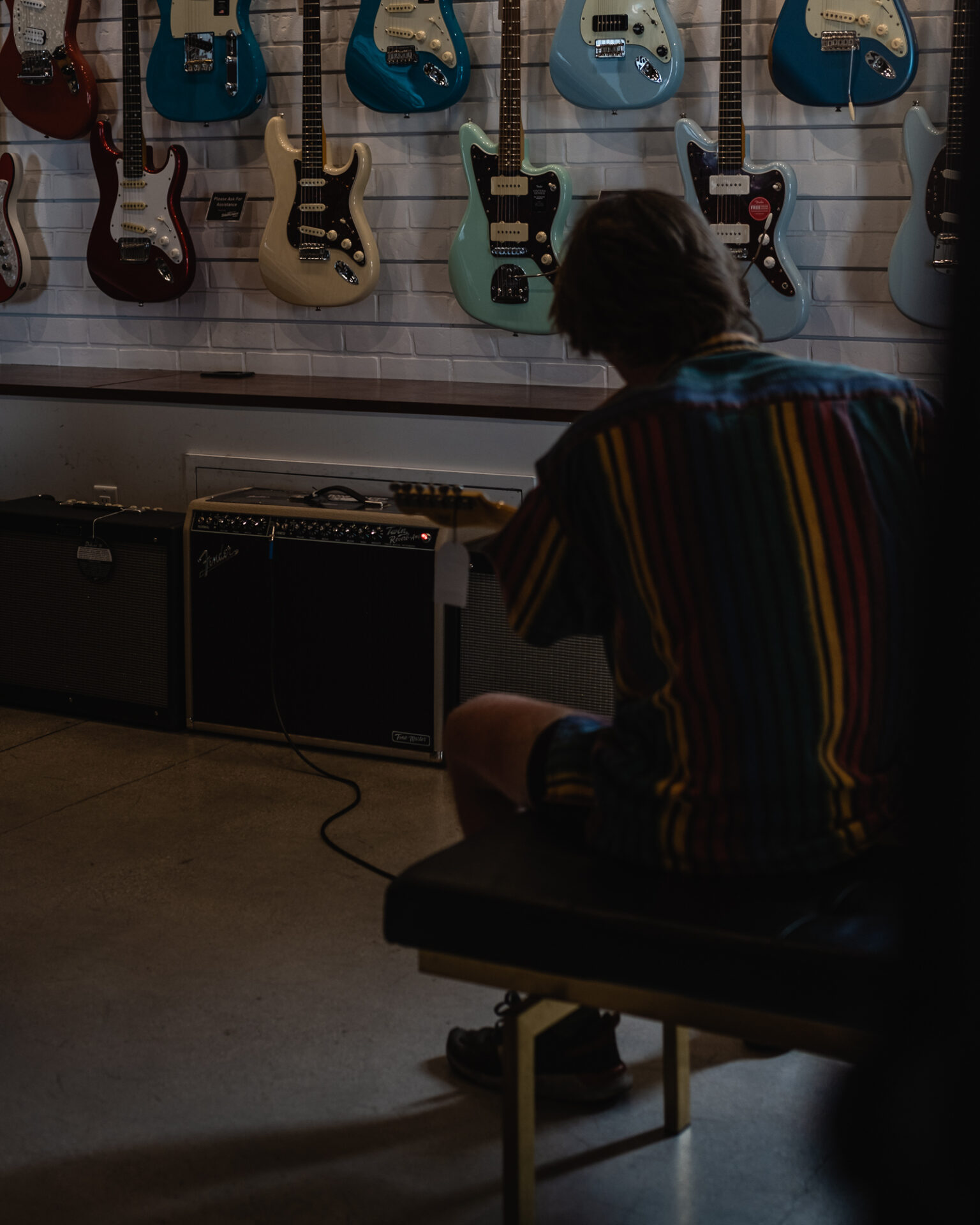
What is it about that particular 911? What makes it special to you?
Air-cooled 911s are the cars that got me into cars and inspired me to dream when I was a kid. Porsche is all about evolution, not revolution. You can clearly see the lineage from 1964 all the way up to 1998, or really 1994 – which was the second to last air-cooled iteration of the 911. Those cars had the 964 internal nomenclature and those cars are the perfect hybrid of the old and the new 911 worlds to me. They still have the old body shape that can be easily traced back to 1964, with the original lines that “Butzi” Porsche penned. The interior wasn’t much different from those original ‘64 cars, the gauge layout was the same. The ergonomics feel pretty much the same. The cars really felt the same, but what was really interesting about the 964 generation of 911s is they were the first to have any real modern amenities, like a modern gearbox, an all-wheel-drive offering, or ABS brakes. A lot of tech trickled down from the iconic Porsche 959 supercars, so the 964 really had the old feel, looks, and charm and its lineage clearly represented – which is the thing that really moves me – but with a few modern touches I like. I just love the idea of doing more of what works and less of what doesn’t and making something better every single time you release a new one. That philosophy is what I teach my kids and it’s how I live my life. That’s a Porsche philosophy and it always really spoke to me. The 964 was the last that had that for me because the 993 generation lost a lot of that visceral Porsche feel. It was still air-cooled, but the driving experience became so good that it lost some of that Porsche feeling for me.
When you drive a 993 now and compare it to any new Porsche, it feels absolutely ancient. But at the time, it felt too modern and like there were too many things between me and the road. And that was why the 964 spoke to me. Also, the Targa was the first Porsche that I ever saw. It was the one that I saw the Maxell Cassette ads as a kid and it was the one that I associated Porsche with my whole life. The 964 was the last of the traditional Targa design because it became an oversized sunroof on the 993. To me, it was blasphemy to even badge it as a Targa.
I bought mine as a 50,000 mile example, all original paint, all original interior, all original everything. I’ve only had it for six months and I’ve put 13,000 miles on it and I’ve redone some of the interior – not because I needed to, but just because I’m like that. It’s just my baby. People ask me all the time if it’s for sale and I say “Sure it’s for sale! You’re just going to have to talk to my kids when I die!”
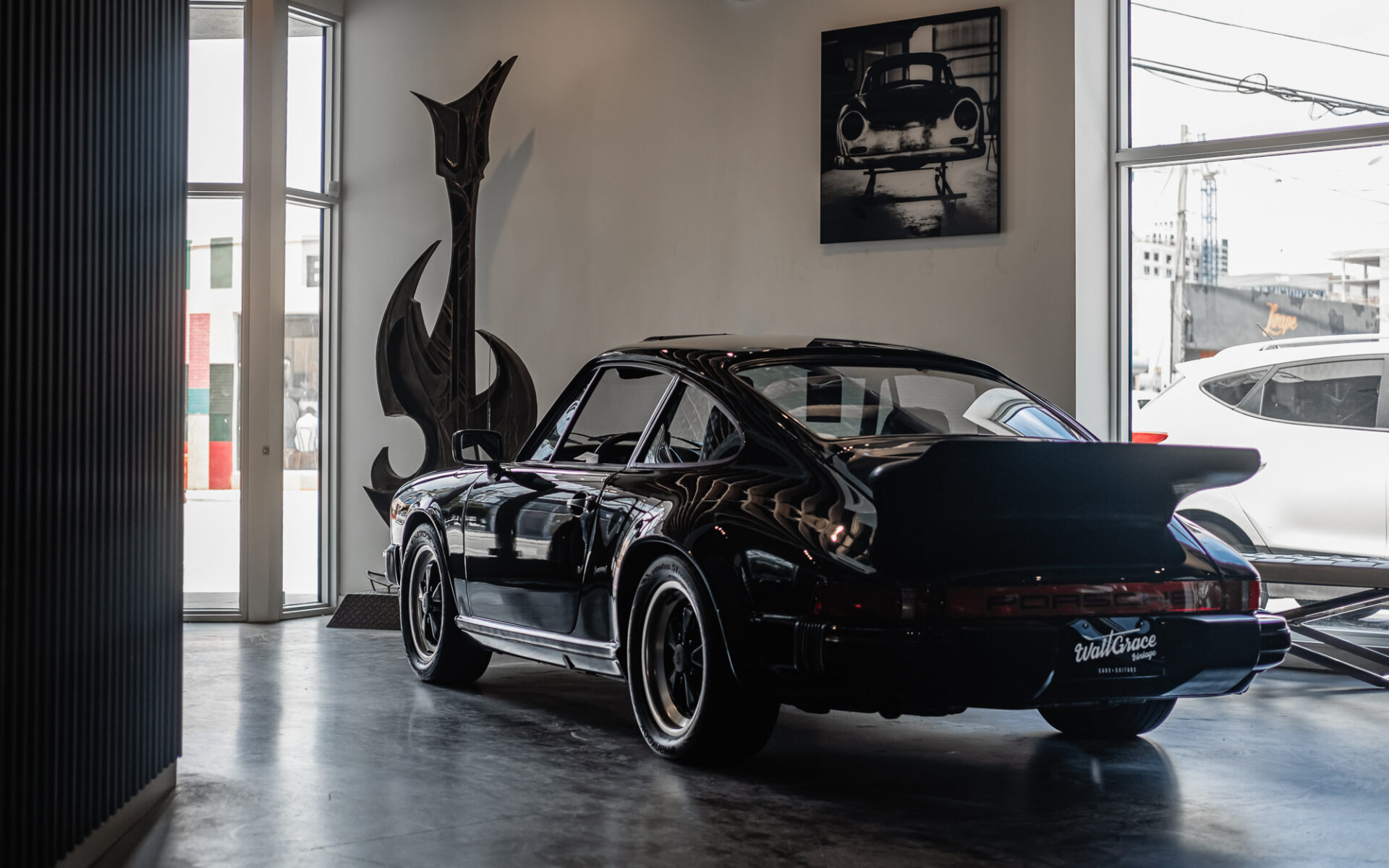
It’s a joy to watch you work your way through it on Instagram and make the car its best self. The original 911 form factor makes for such an engaging car because it’ll bite you if you’re not paying attention with the weight distribution of the engine hanging out back. You have no choice but to be invested and aware and that makes it such a great driver’s car.
Absolutely. That’s the thing about the 993 that I didn’t love. It became so good that you didn’t need to be a great driver anymore to get a lot out of the car. There were so many computer-assisted things. They weren’t “widow makers” anymore, they were refined. With those older cars, you really need to know what you’re doing and you always have to be alert because physics will take over and you will be facing the wrong way or wrapped around a tree if you’re not careful.

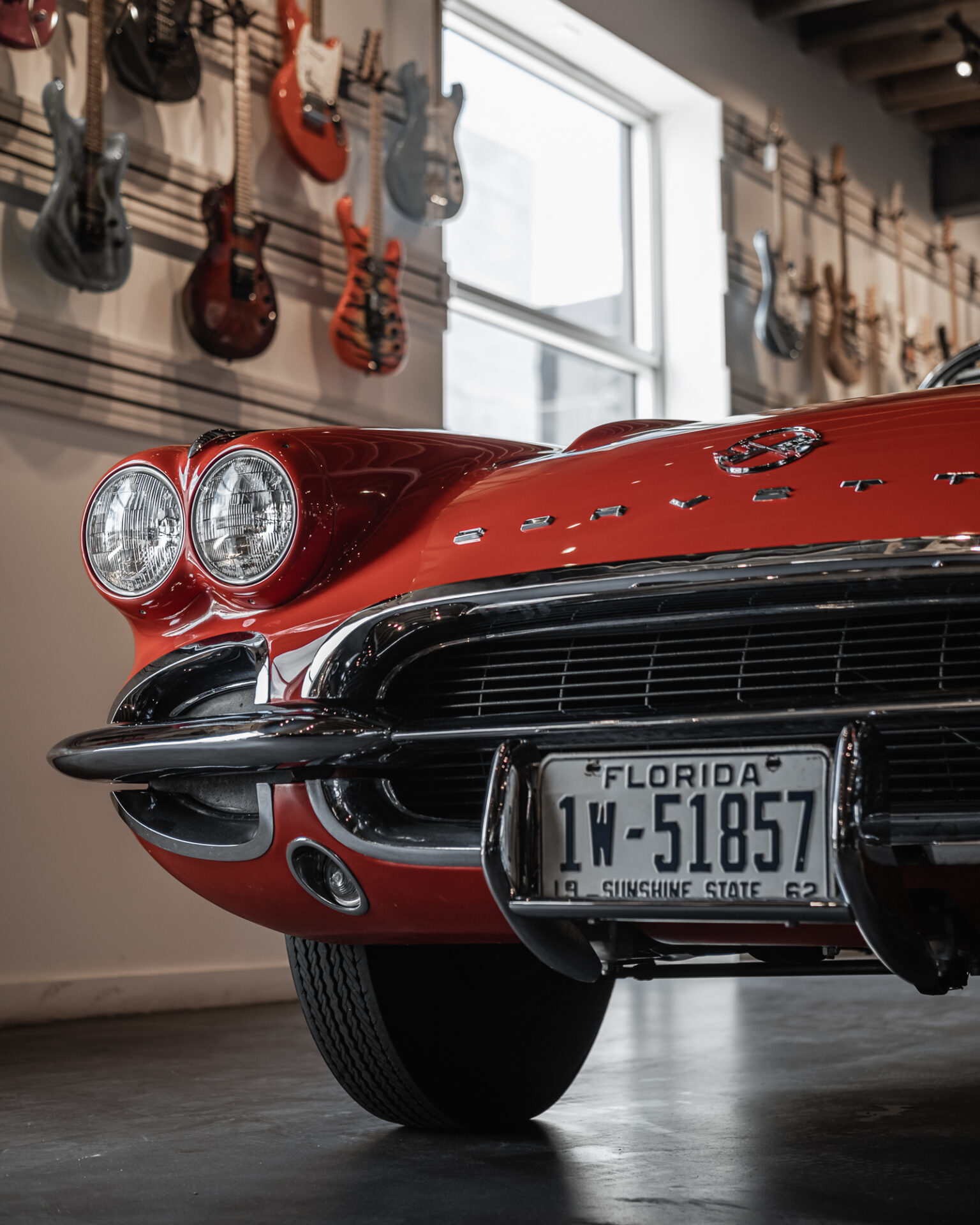
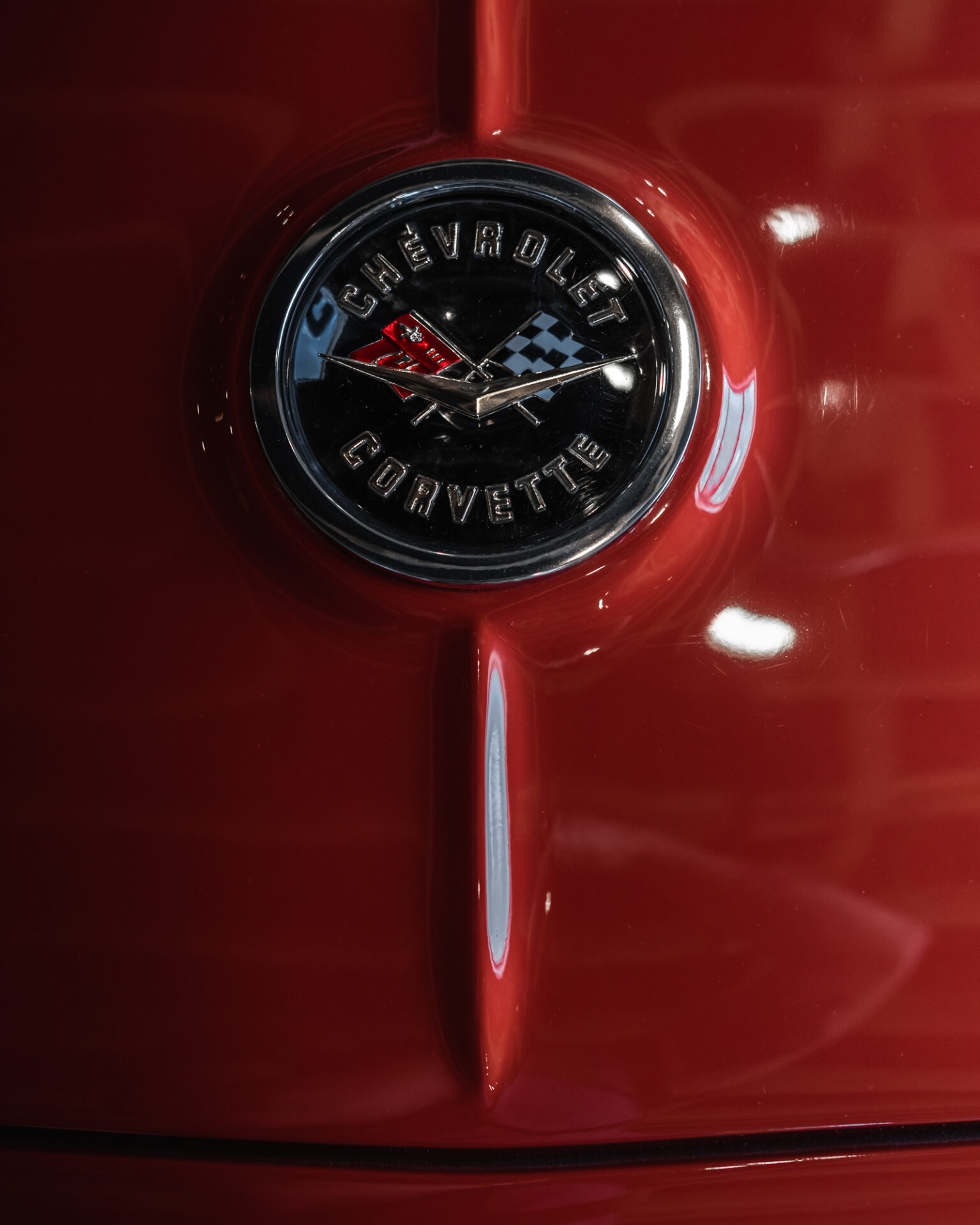
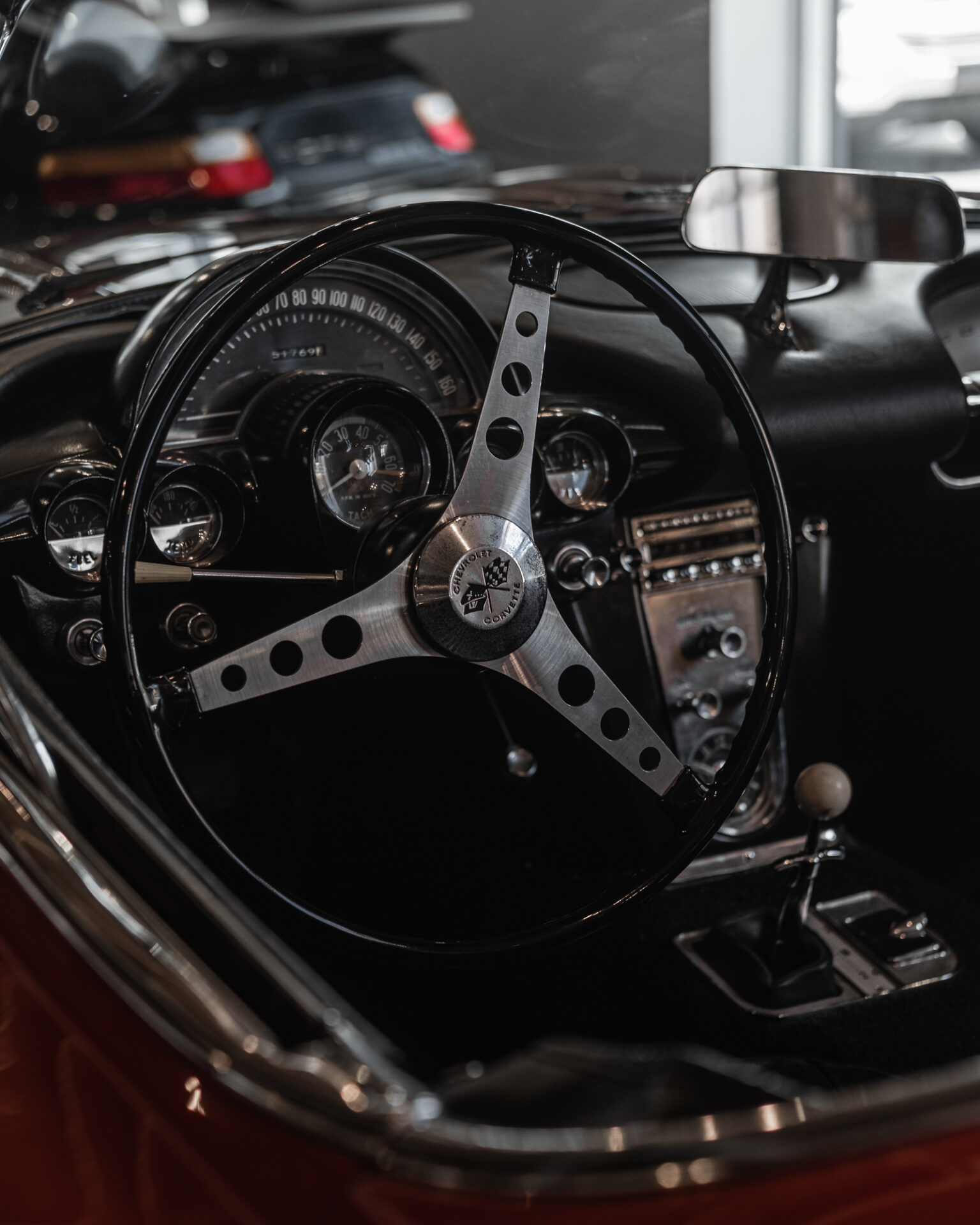
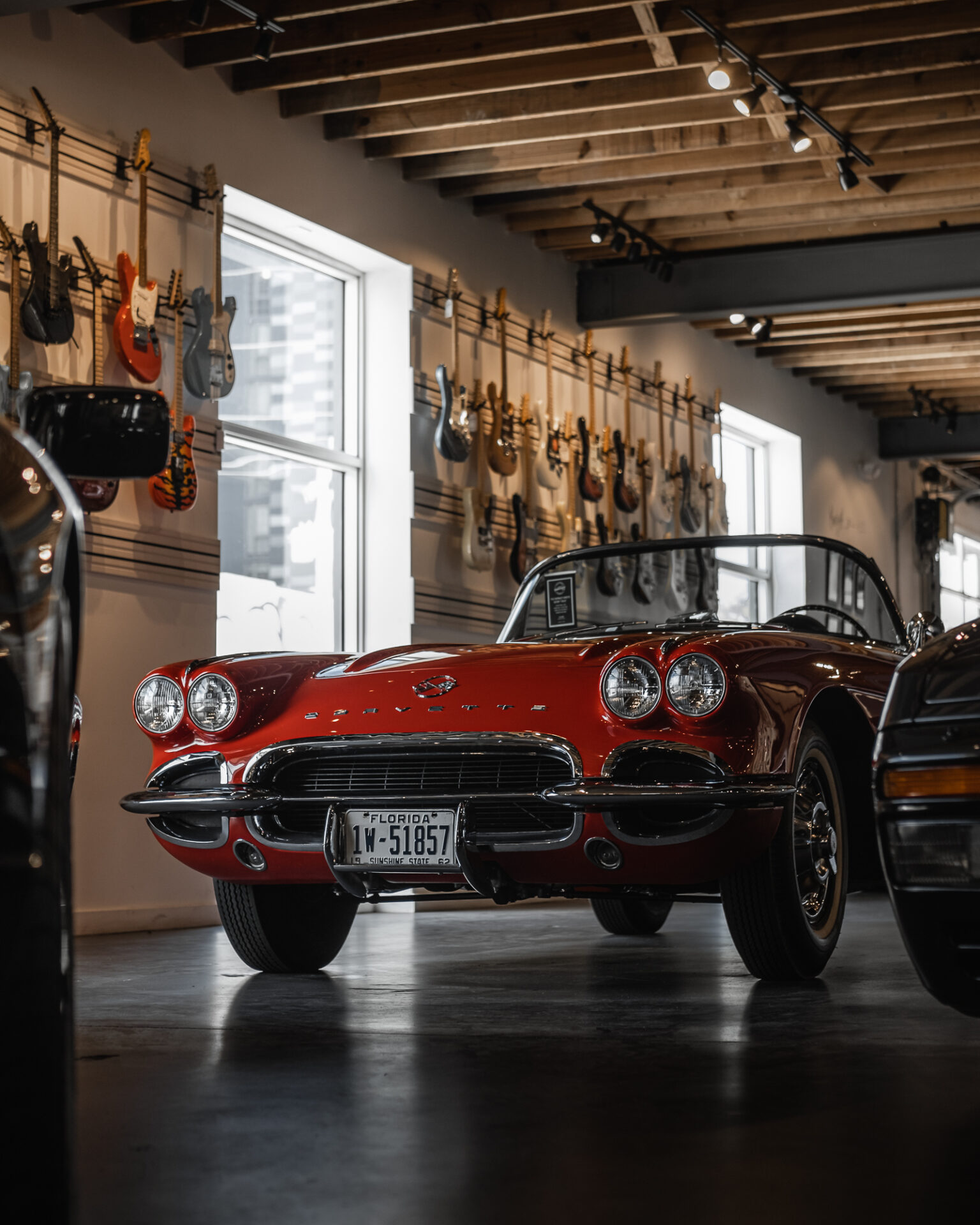
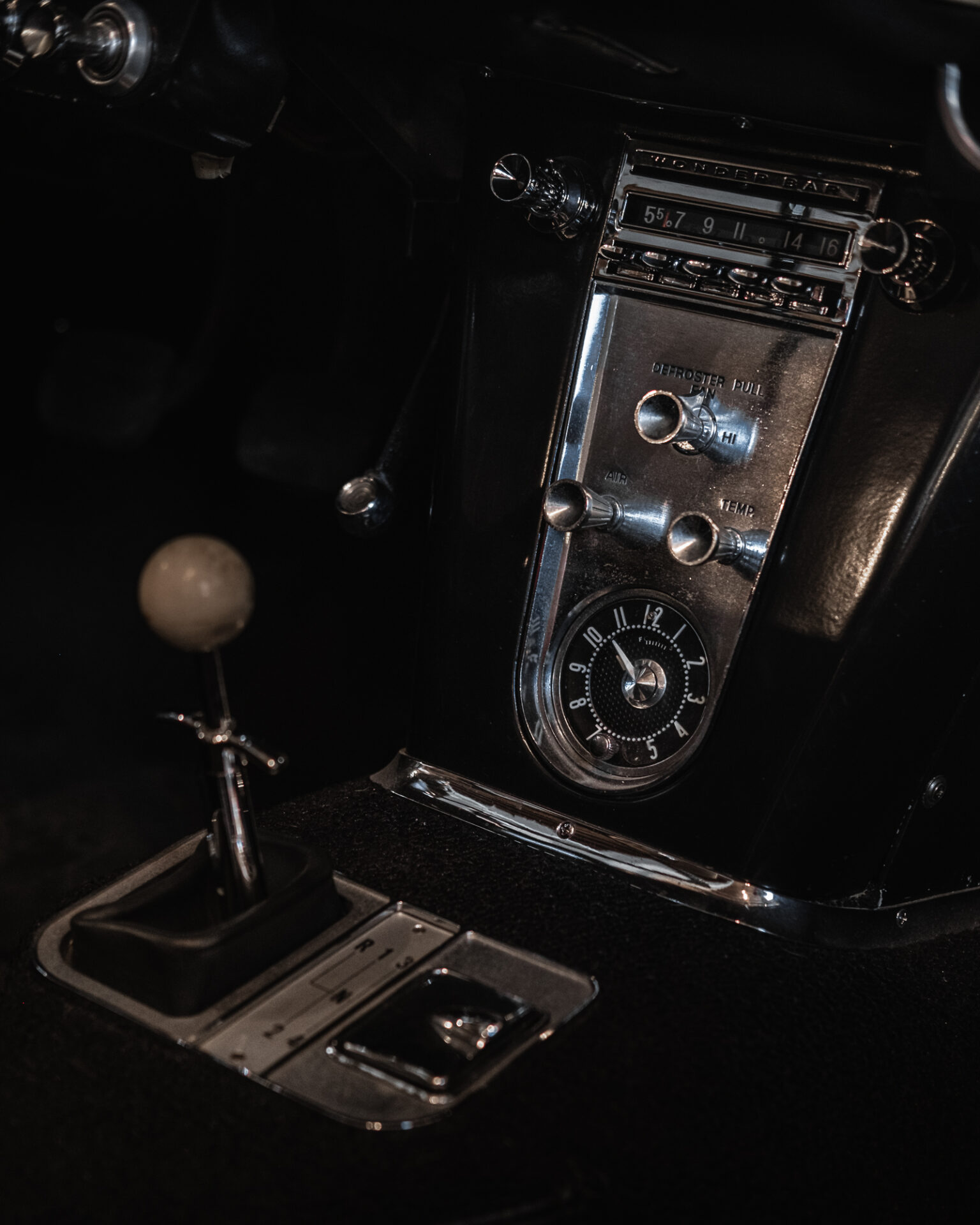
You’ve owned some incredible guitars over the years and I recall the first time we met, you basically made me play a 1959 Les Paul “‘Burst” that you’d recently gotten from John Shanks through a 100 Watt Marshall at full tilt in the middle of the day. Do you still have that guitar and what guitars stay in the collection nowadays?
I sold that one to Josh Klinghoffer of the Red Hot Chili Peppers, but I have a different one now.
Is owning a “‘Burst” another childhood dream realized? I know you’re a huge rock ‘n’ roll fan and have forged relationships with a lot of your favorite guitar players over the last couple of years.
My whole life! All of my rock heroes are now my friends and I’ve been very fortunate in that regard. I don’t think I have anyone left to meet but Rod Stewart, and I don’t want to do that – I want to keep him the God that he is. I don’t want him to be human.
“‘Bursts” are obviously the dream guitars, but I was very fortunate to get one very early on in life and I’ve had one of those guitars in one form or another since I was 13 years old. I say one form or another because the first one I got was just a husk; everything was changed. It had DiMarzio Super Distortion pickups in it, RadioShack capacitors, All Parts clear speed knobs, Grover tuners. I’m surprised it didn’t have a Floyd Rose or Kahler trem on it because it was so destroyed. My mother actually found it in New York when I was living in Philly and she only knew the name Les Paul and that liked Gibson Les Pauls because of Ace Frehley, but she didn’t know a ‘59 from a ‘79. So my cousin’s boyfriend was a carpenter and someone gave him an old, beat up Les Paul as collateral on a job. They never showed up with the money and when my mom was visiting, they said “Judi, doesn’t Billie play guitar?” They showed her the guitar and it looked kind of like my ‘79 tobacco sunburst Les Paul Standard and she recognized the shape and the name on the headstock. She asked how much they wanted for it and they said “Just give me the $275 the guy owes me” or whatever it was. She knew that that was a good deal considering she paid $500 for my ‘79, so she came home with a 1959 Les Paul. As soon as I saw the brown case, I got excited and I knew what was probably in there. And sure enough, it was the modified husk of an original ‘59 ‘Burst and I had that for a good part of my life.
I’m so fortunate to be around such great guitars always, but I don’t really have great stories attached to most of them besides that one. I’ve never found a “‘Burst” under a bed or anything like that.
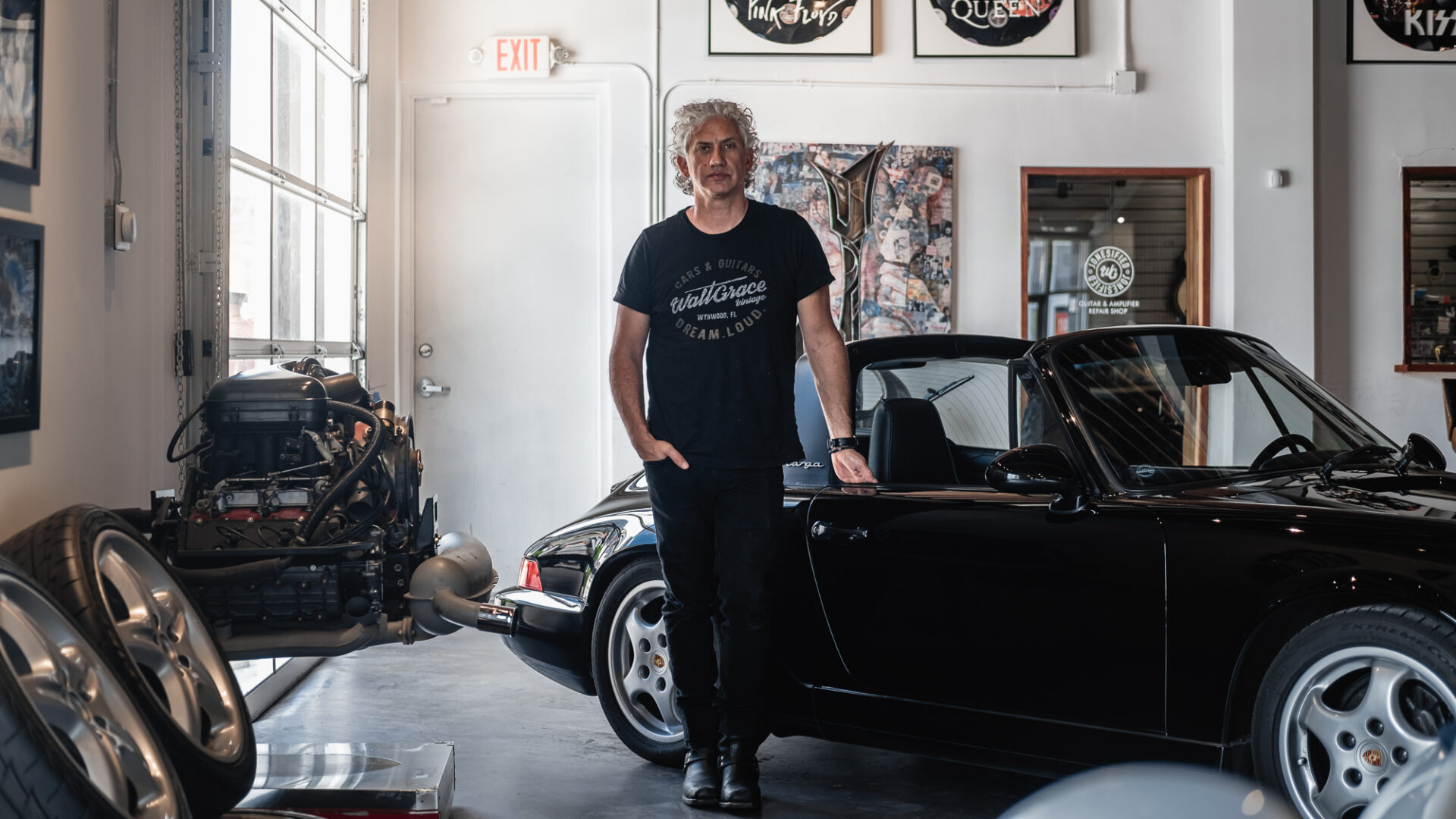
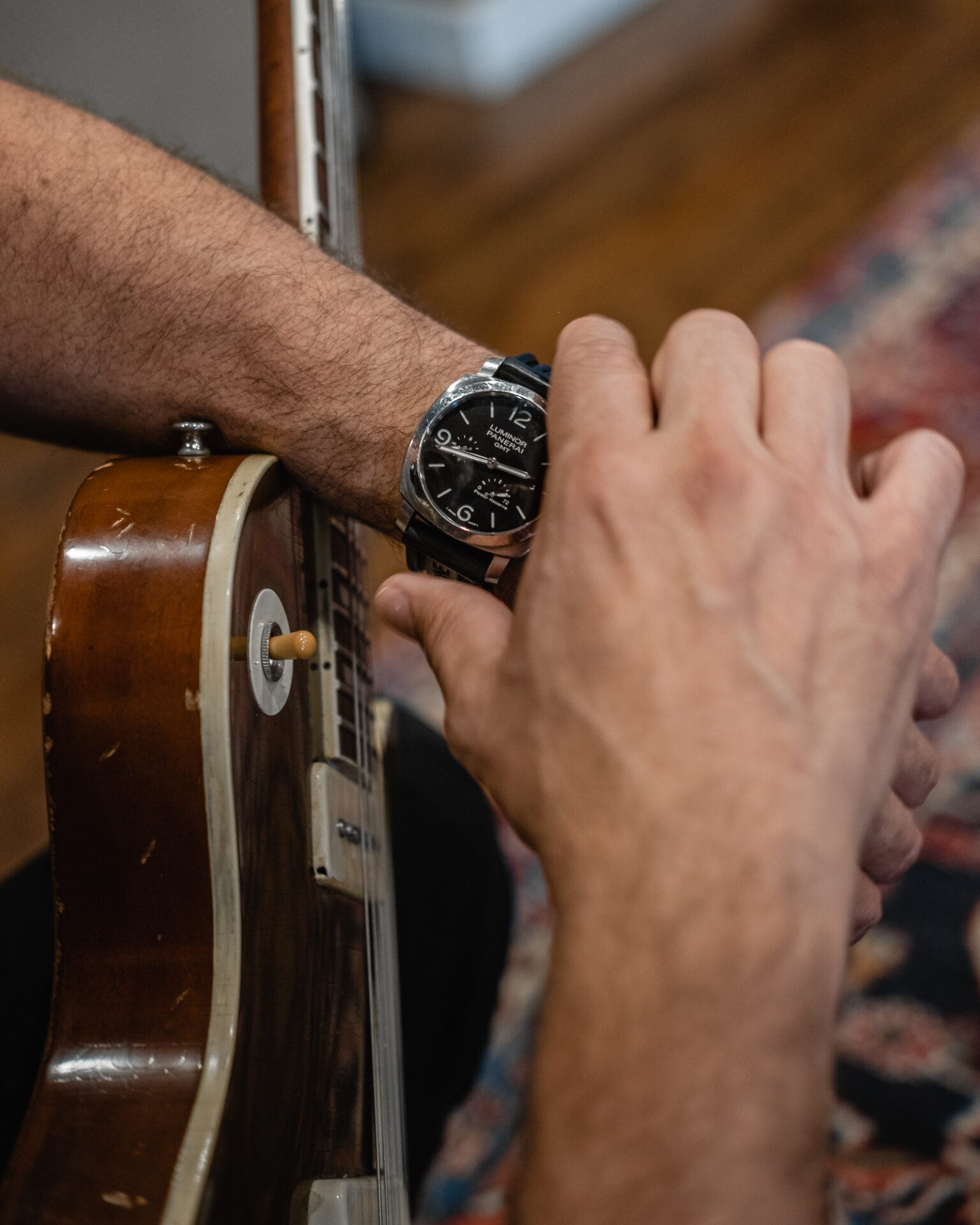
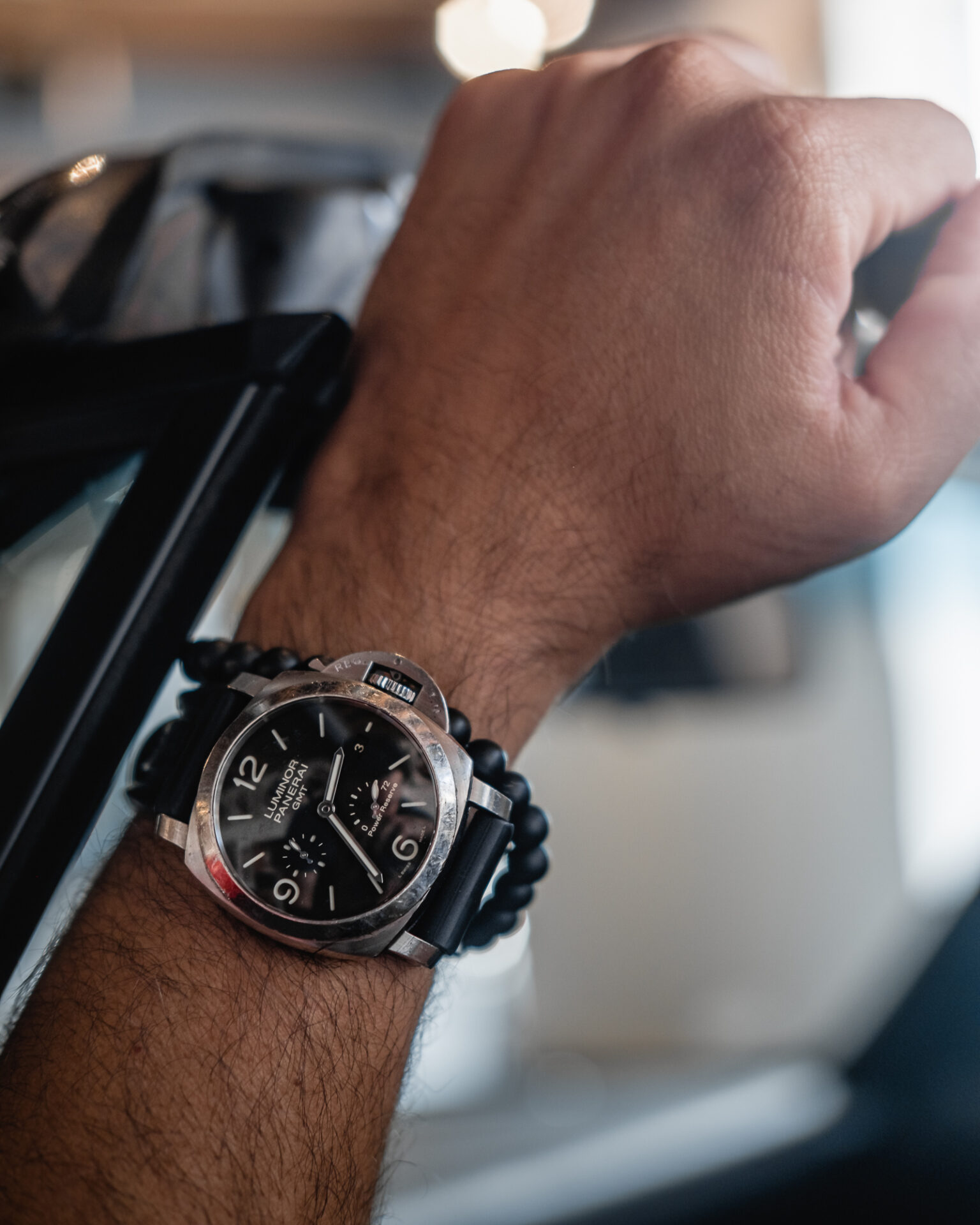
You say you don’t really identify fully as a watch guy, but you are clearer a passionate watch owner and collector. You always have a Panerai on when I see you. What is it about that brand that does it for you?
Oddly enough, everything that I have can all be traced back to one single watch: A “Happy Fish” Scuba Swatch I got in 1989. I started an international aftermarket collectible Swatch watch business when I was 19 and was one of the biggest dealers in the world before I was 21. I made a fortune at a very young age through classic Swatch watches. I actually once traded a Mimmo Paladino Swatch straight-up for a Rolex “Zenith” Daytona – brand new in-the-box. I still have that Daytona and a few others different non-Panerai things.
With Panerai, it’s the same thing that I love about Porsche. It’s my overall philosophy in a watch; It’s amazing craftsmanship, a beautiful design that’s unique and a bit exclusive, but it’s not Rolex. It’s not Cartier. If you don’t know what it is, you won’t notice it really and it’s really kind of under the radar. With Porsche, most people don’t know if they’re looking at a ‘73 or an ‘83, a 2003 or 2023. To the untrained eye, a GT3 looks the same as a Carrera and it certainly doesn’t look like a typical expensive flashy thing – like a Ferrari or a Rolex. I like the idea of things that don’t shout “look at me!” but are a little tip of the hat to myself every time I look at it. It’s something I always wanted. I’m also a big guy at 6’ 3” and I have big hands and big wrists, so the size of the case really suits me. I’m very brand loyal and while I have other watches, 95% of them are Panerais and they all look the same! They’re special to me and important and I like the fact that people can’t tell that I have 20 different watches. It’s kind of a sleeper watch unless you know. My favorite one is a Luminor GMT so I can track a second time zone and it’s got a 72 hour power reserve as well.
Did you know we had Paul Newman’s “Paul Newman” Daytona here at the gallery in October of 2017 before they auctioned it off? It was an invitation-only party thrown by Phillips Auction House where they invited potential bidders to party next to the watch and try it on. We were plotting and scheming a way to get to see the watch in-hand and try it on. We were thinking an armed guard was going to come in with a suitcase handcuffed to his wrist. So this girl was setting things up and we asked when the Paul Newman Rolex was going to arrive, and she’s looking down at the display case and she’s like “It’s right here!” and reaches in and hands it to me over the counter! I don’t even know that she knew I was the owner of the gallery, she just handed it to me and I got to try it on!

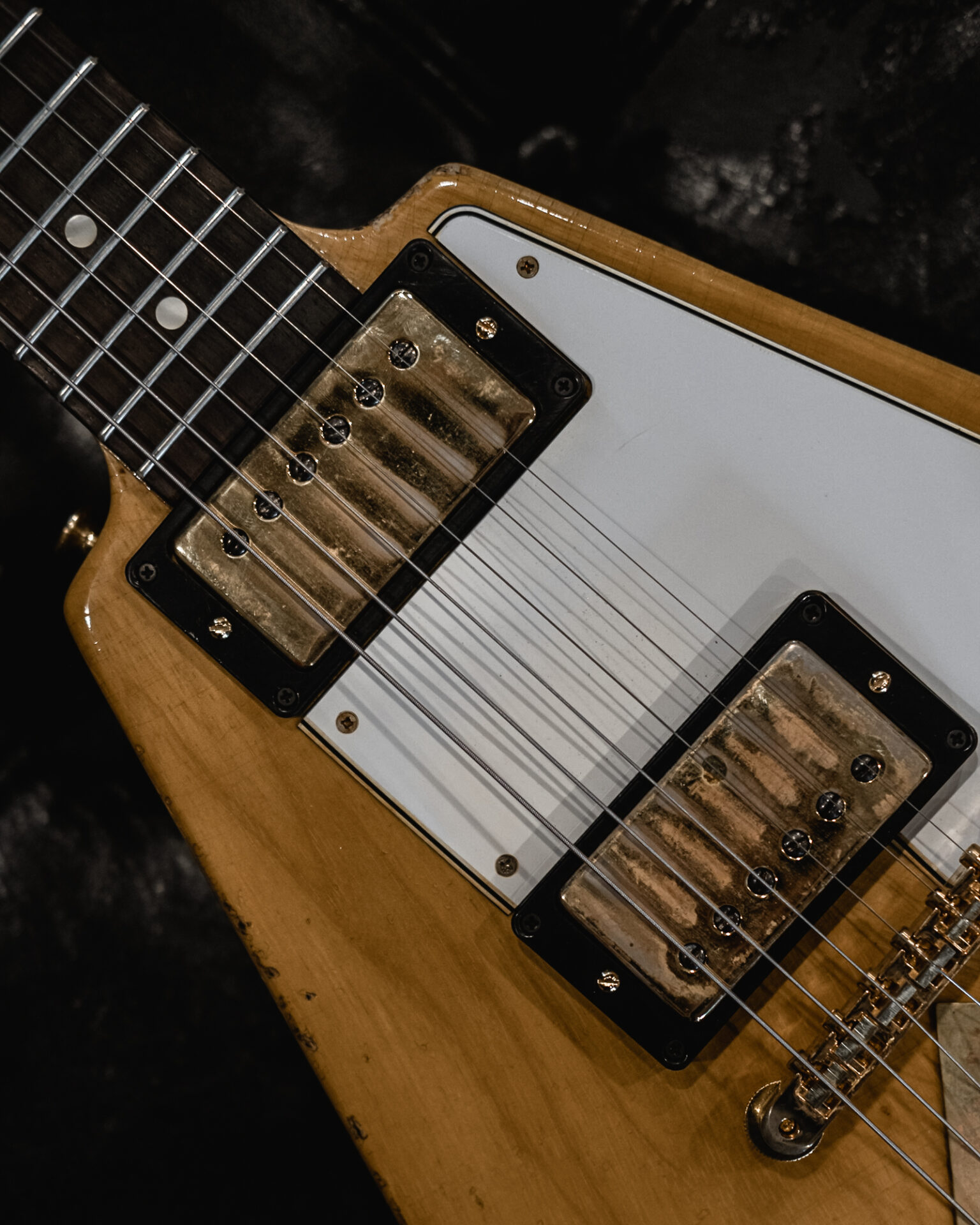
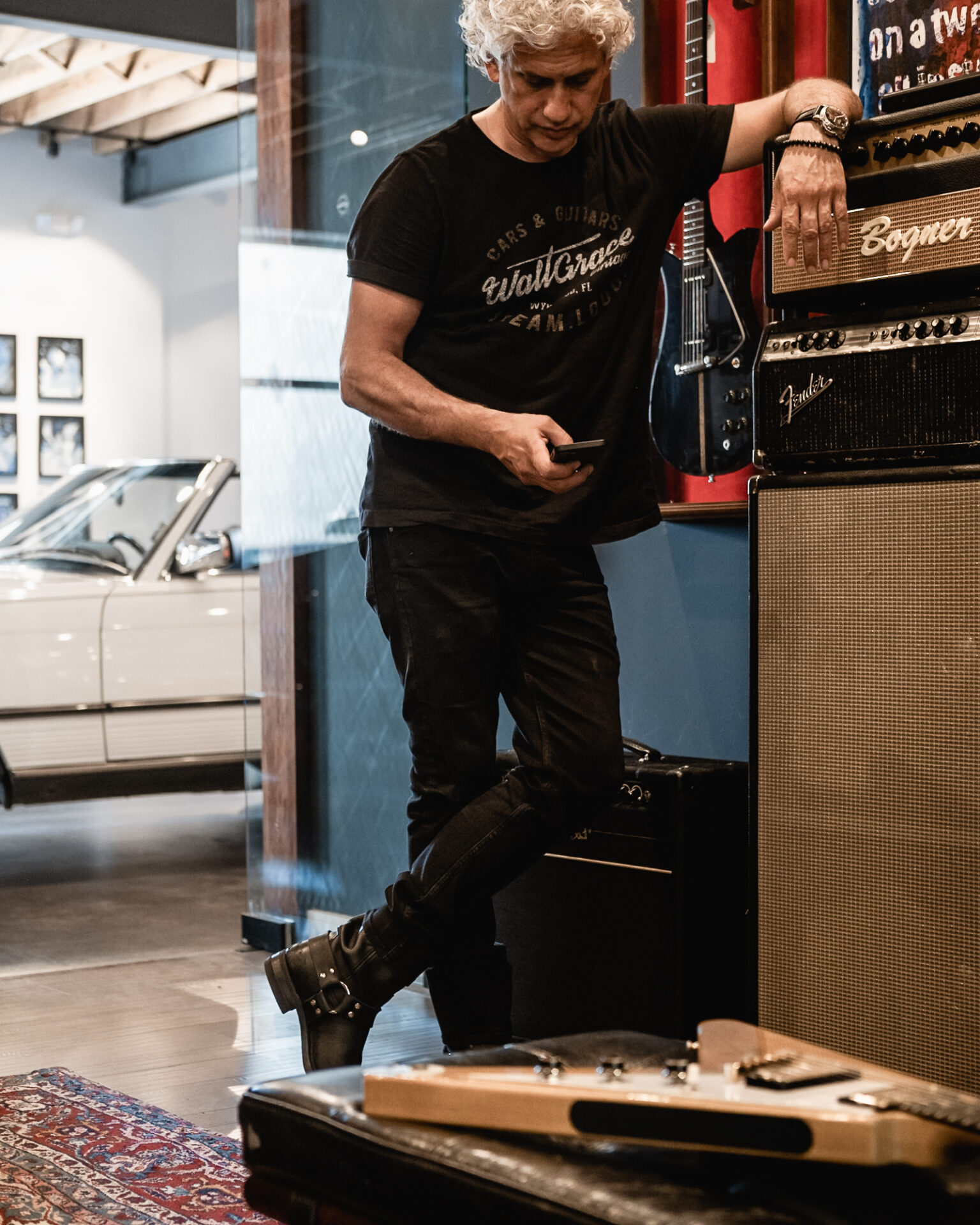
What was it like wearing that watch?
You asked about meeting my rock star heroes, but that watch was more exciting to me at this point. There’s something so badass about a “Panda” dial Daytona and obviously, the history that watch carries is incredible.
Last time we spoke, you were working on a hotel concept. What’s next for Walt Grace Vintage?
Hotels are still on the horizon, but the pandemic put the brakes on it and slowed it down. And as we get life back to normal, that’s all starting to resume again. There’ll be some cool announcements around that pretty soon, but for the immediate future, it’s expanding to other cities. I don’t want to talk too much about any of that, but that’s what I work on every day. We have a few cities earmarked for expansion and that’s what we’re doing next.
Visit Walt Grace Vintage online at https://waltgracevintage.com/
and on Instagram @waltgracevintage
Photos by Vincent Anthony Conti

Check out 'Reference Tracks' our Spotify playlist. We’ll take you through what’s been spinning on the black circle at the C + T offices.

Never miss a watch. Get push notifications for new items and content as well as exclusive access to app only product launches.
Sign up for our newsletter to receive updates and exclusive offers